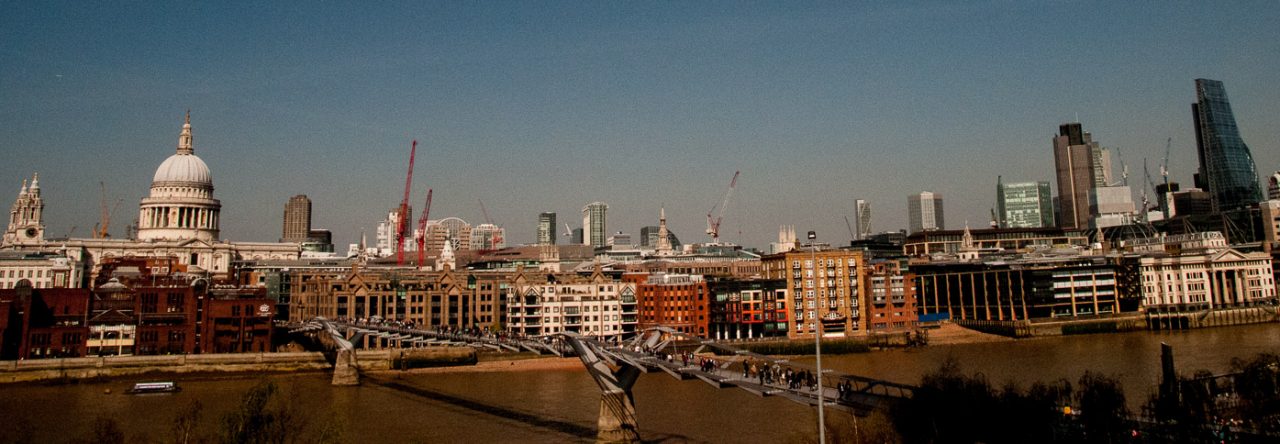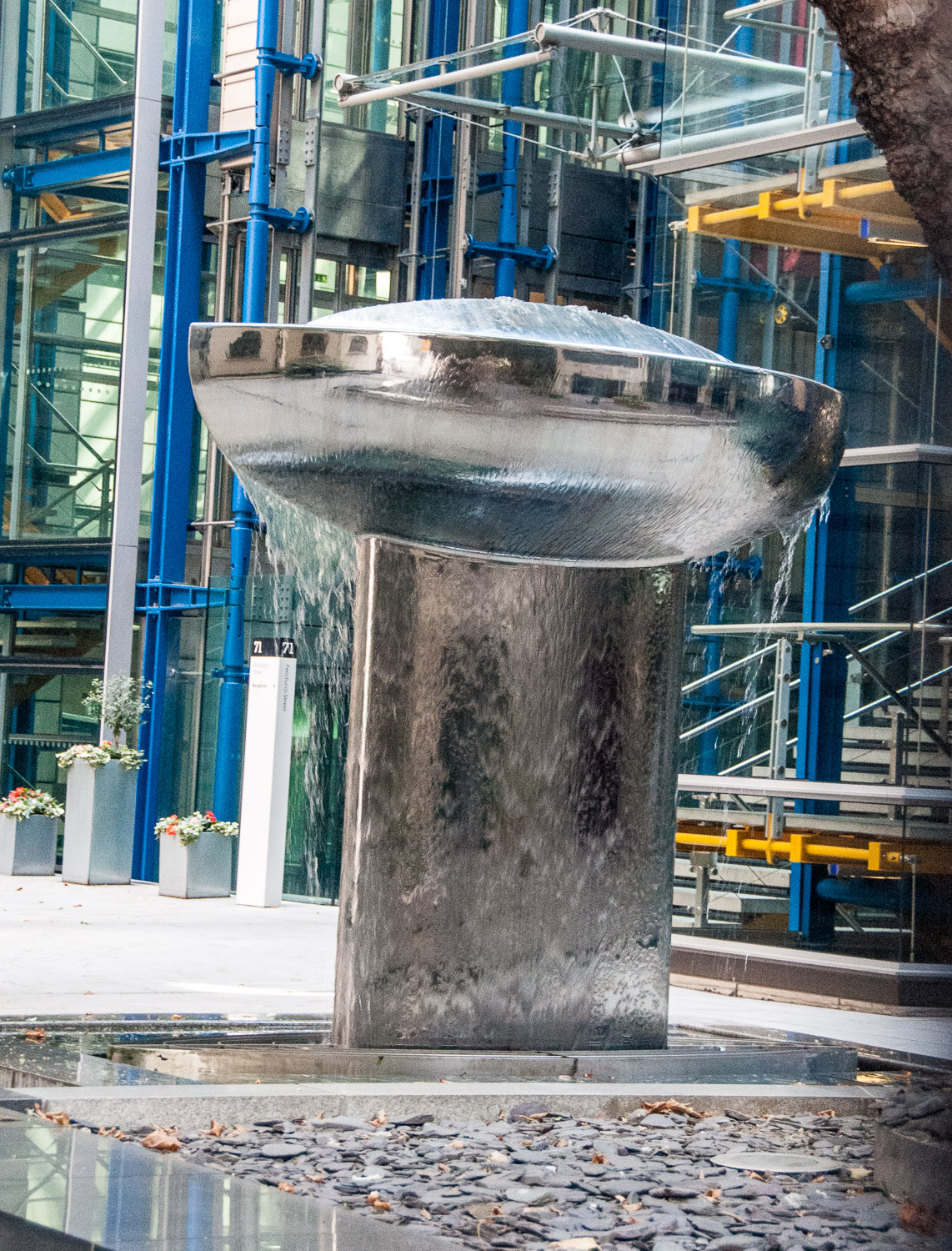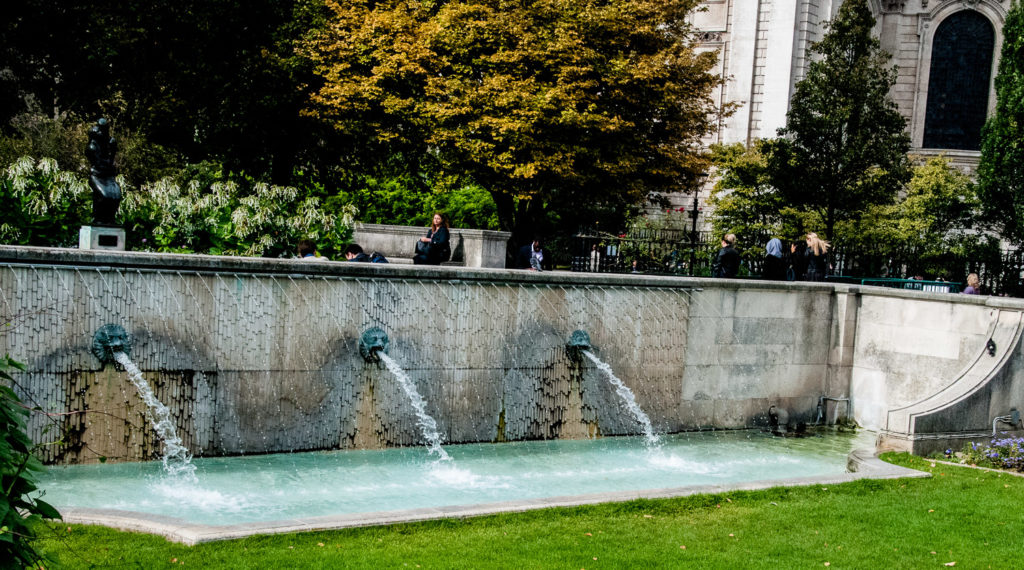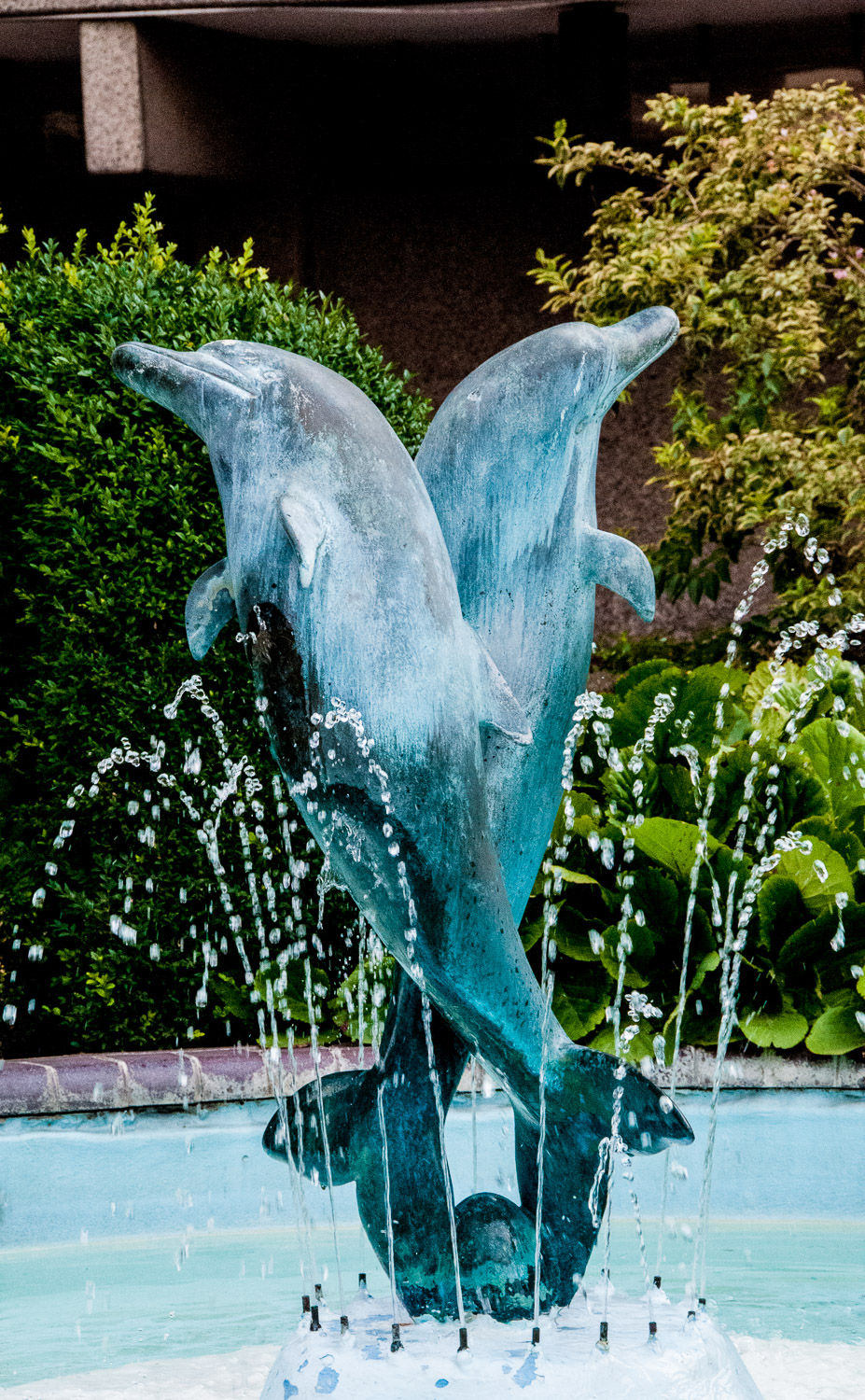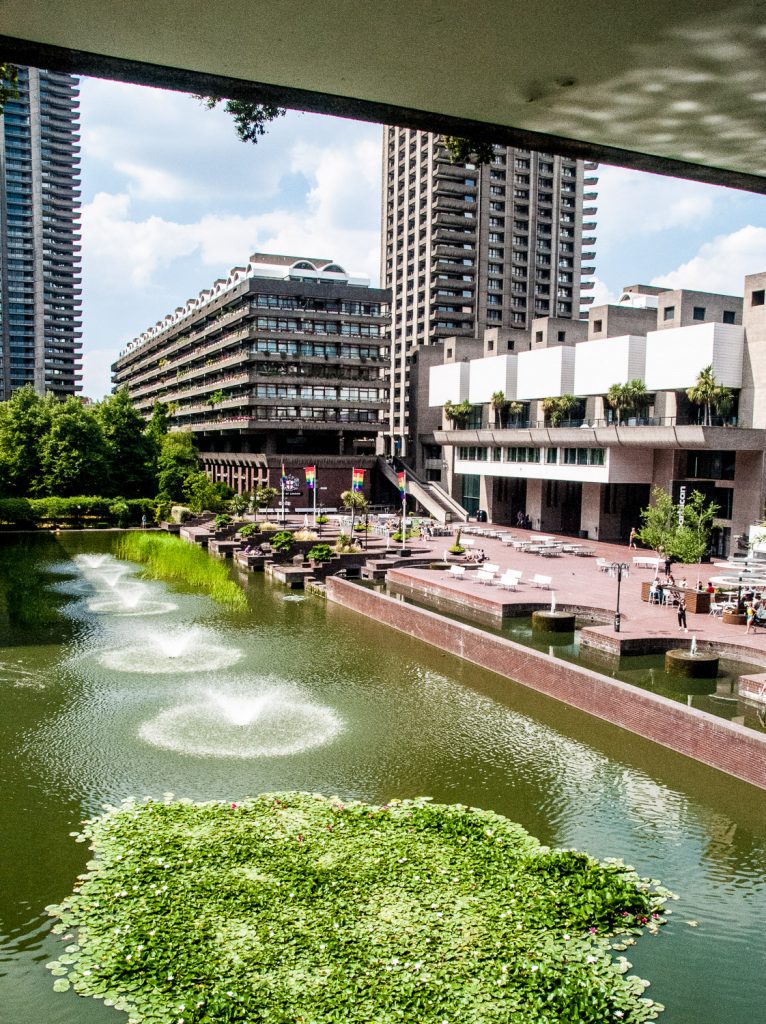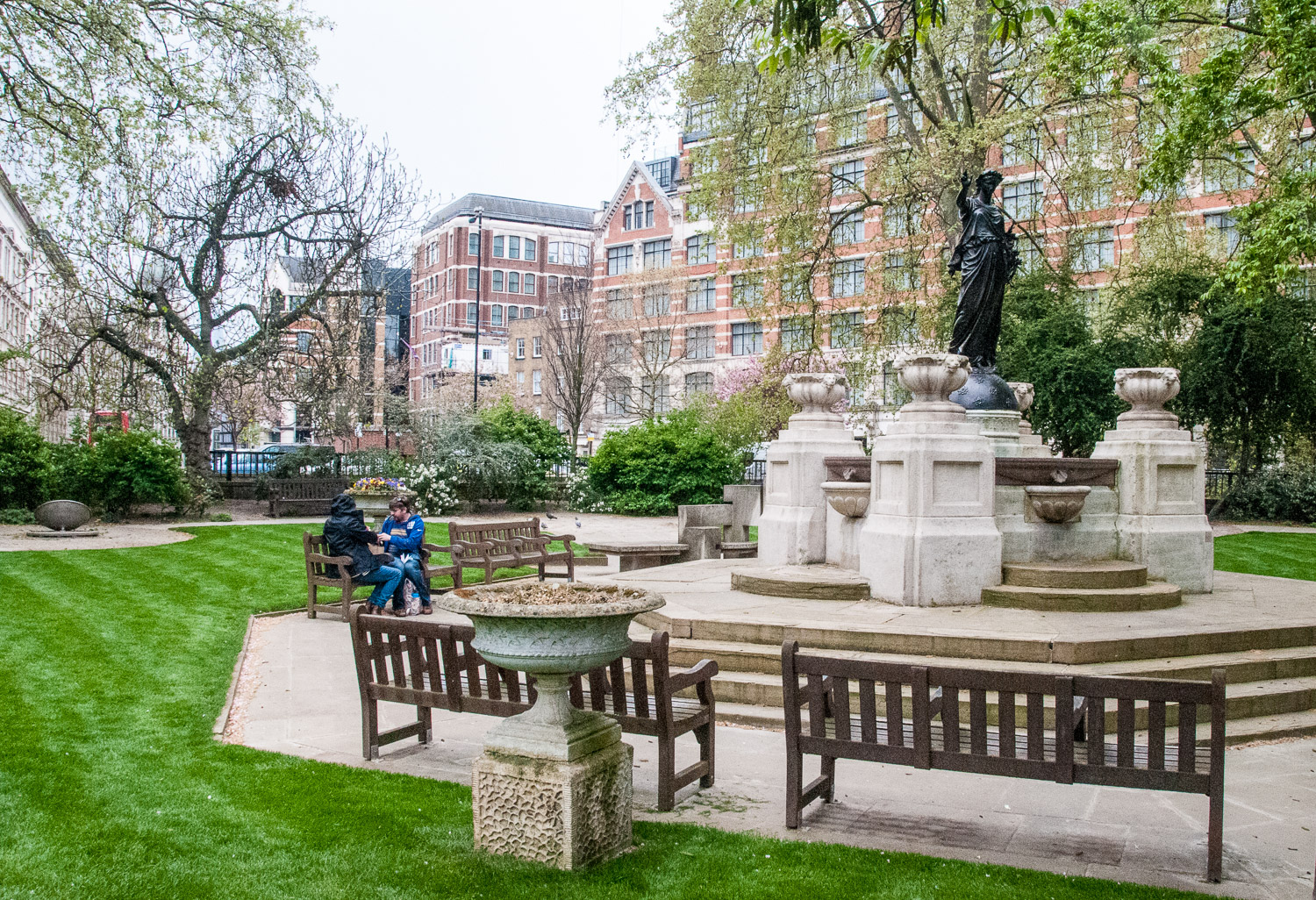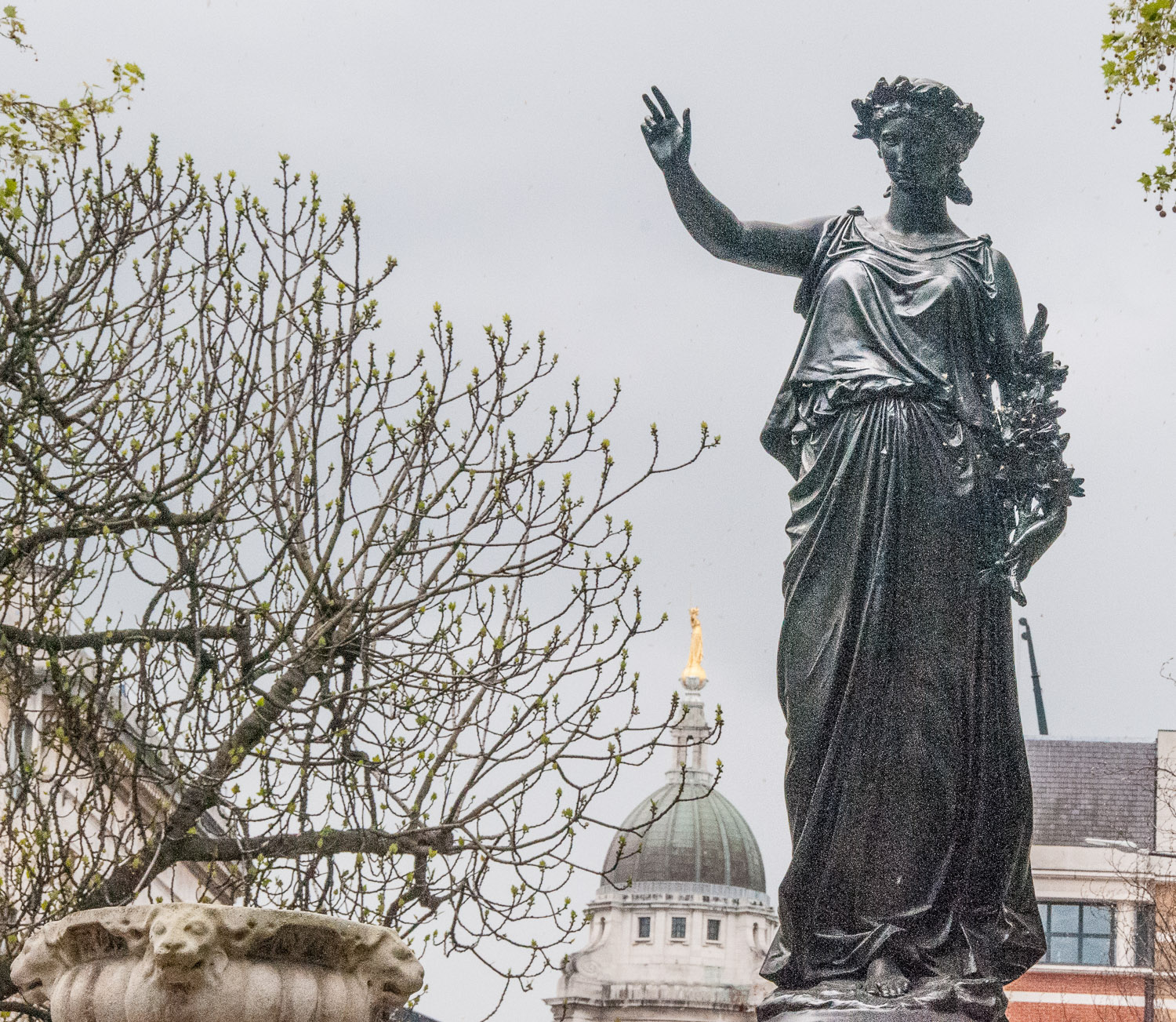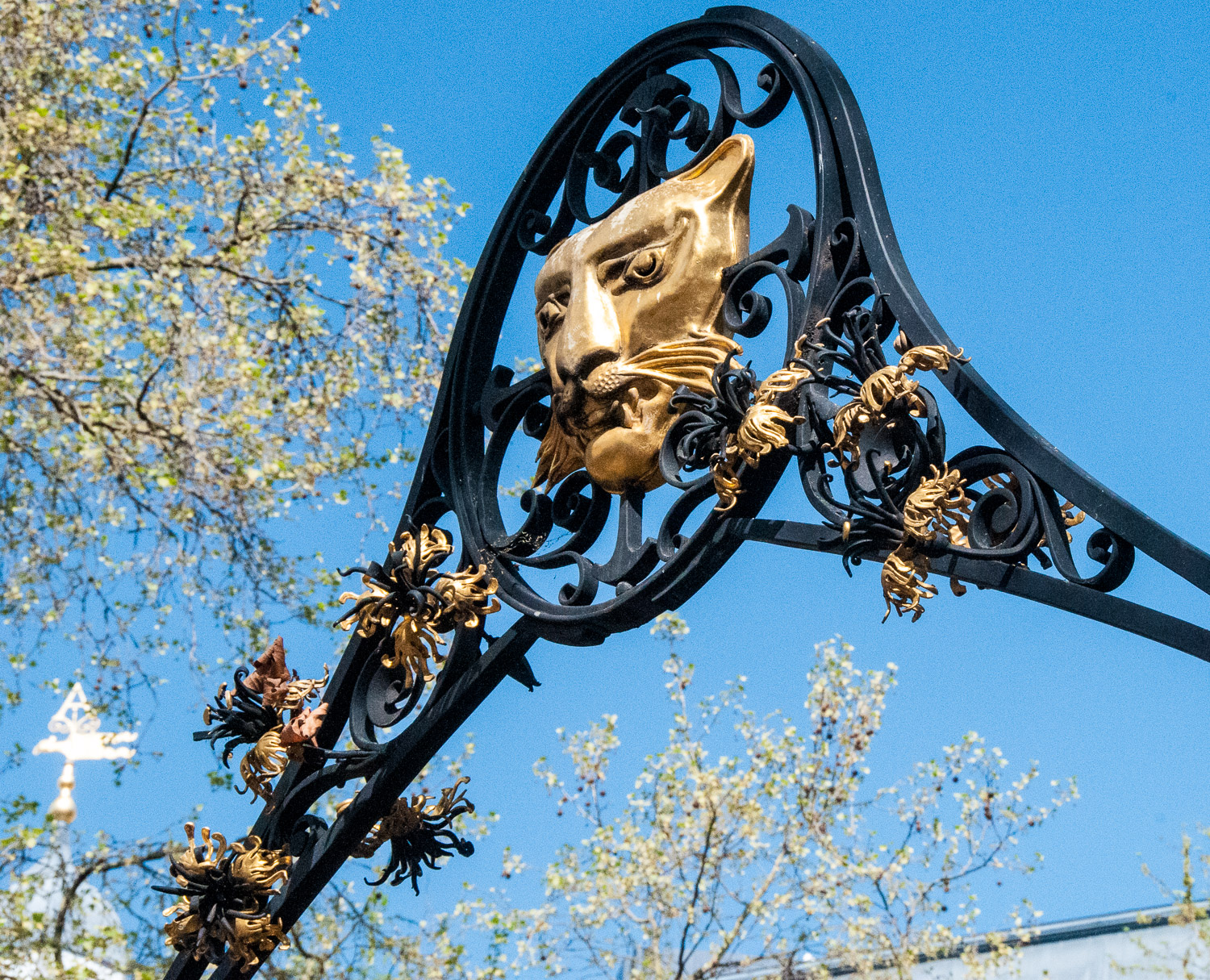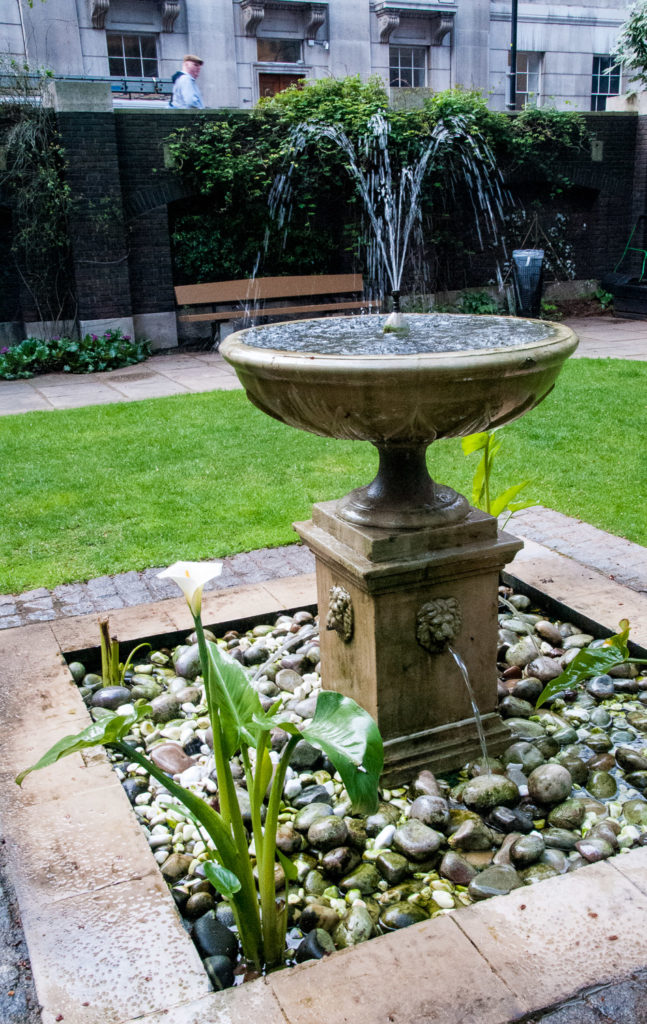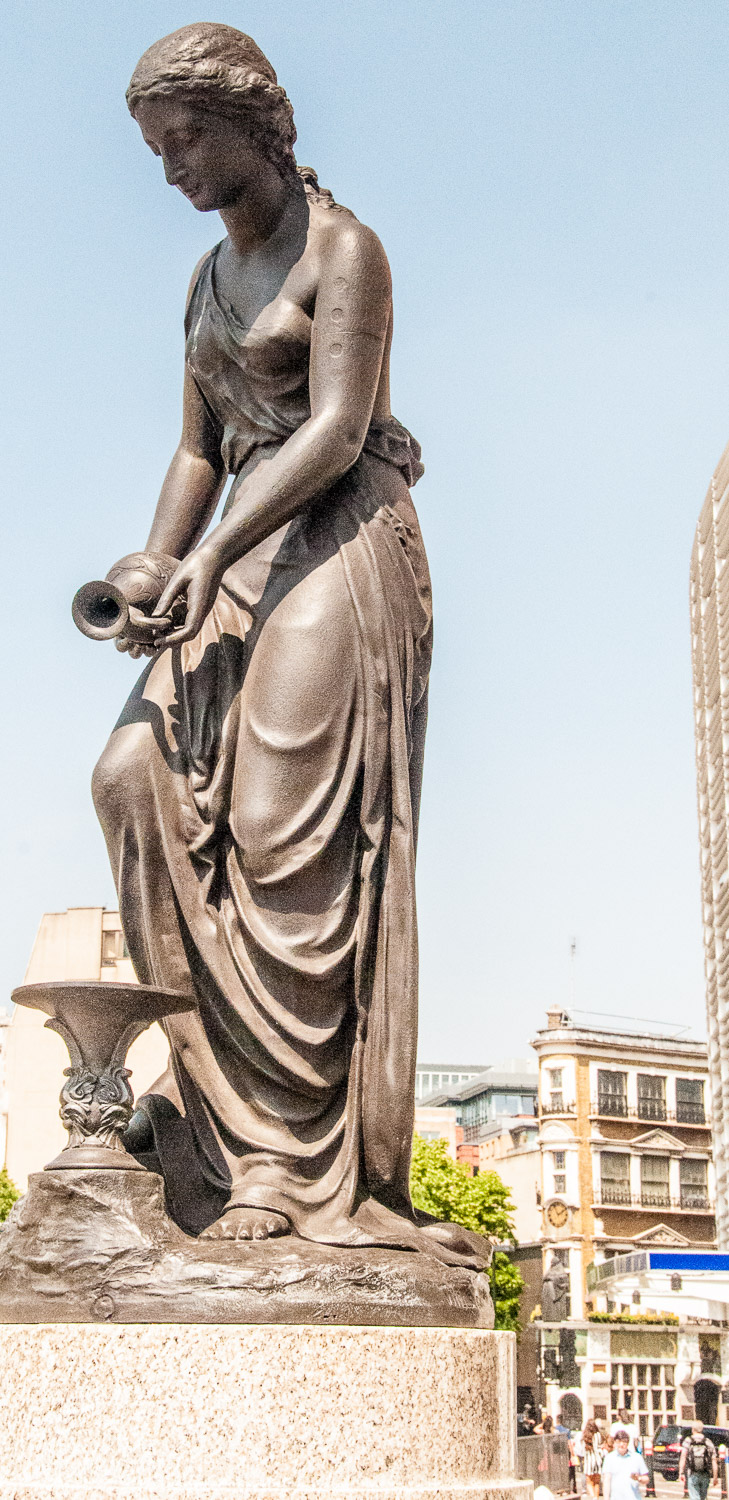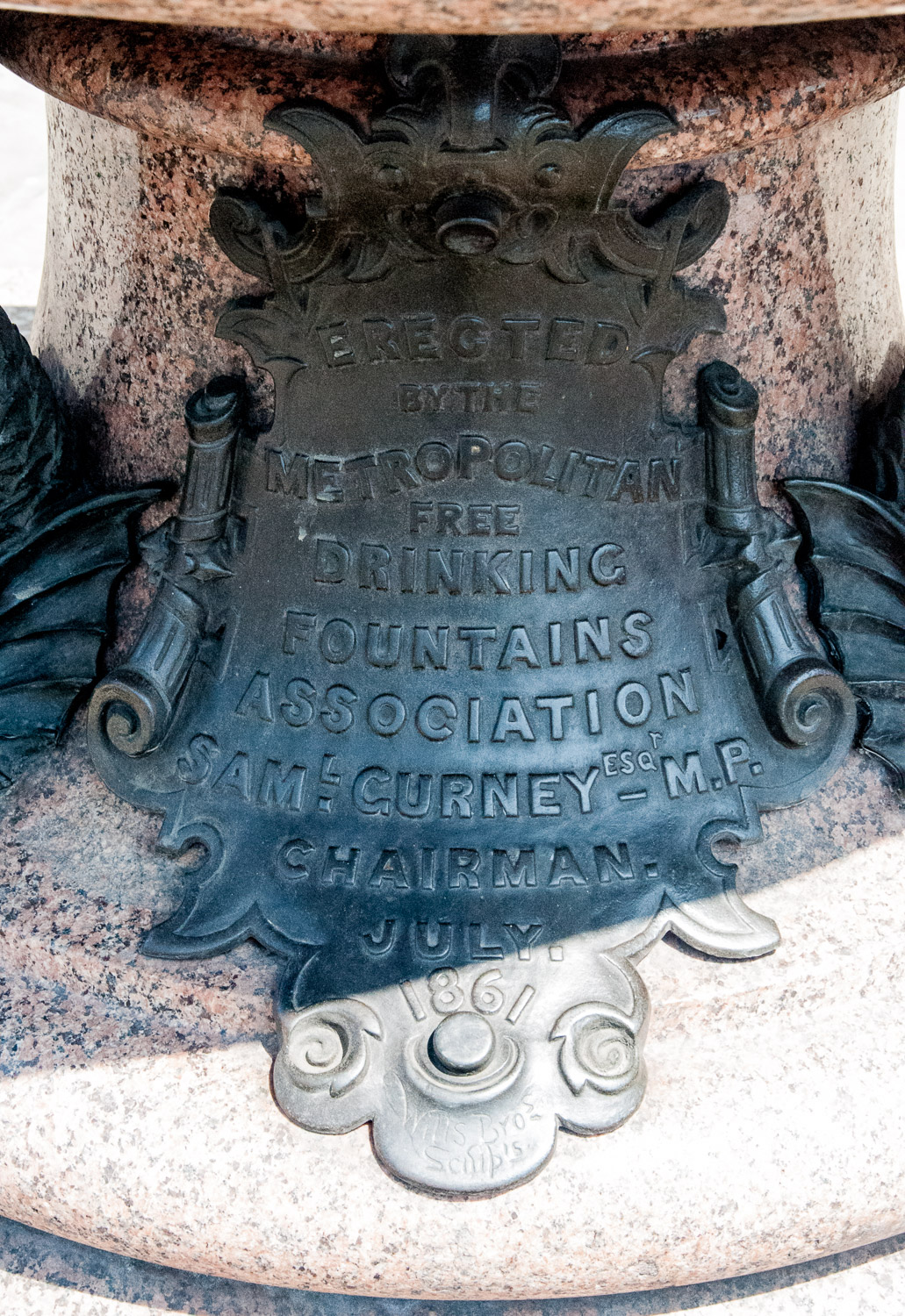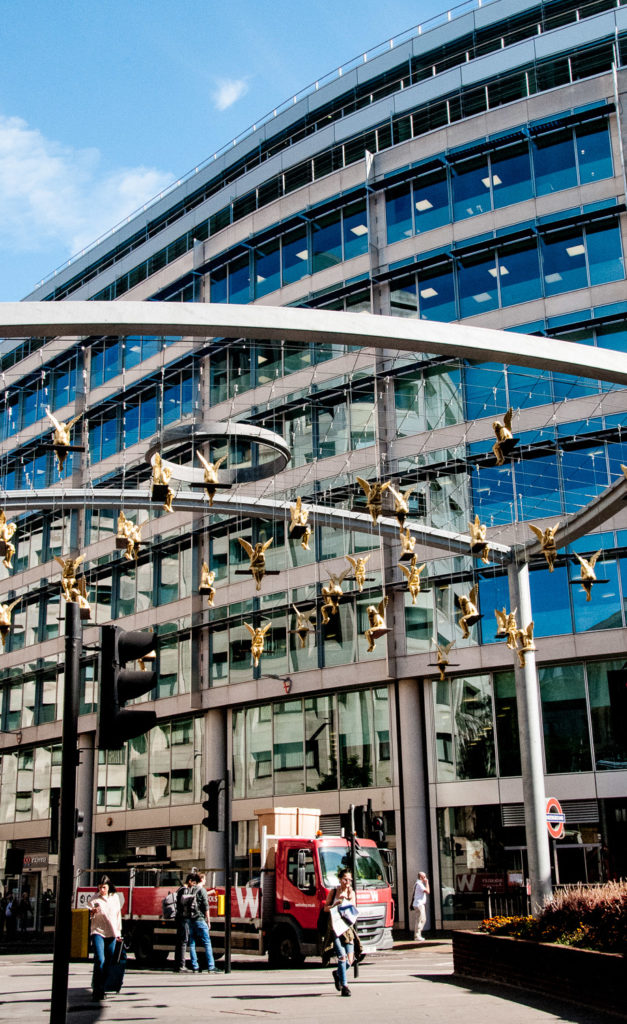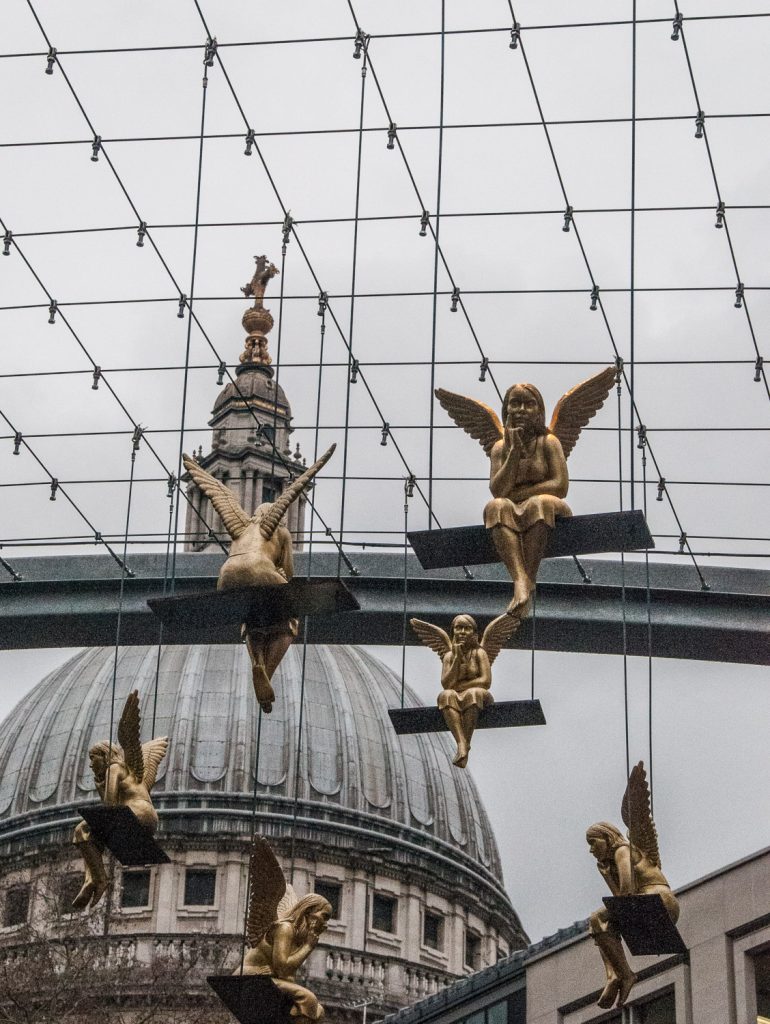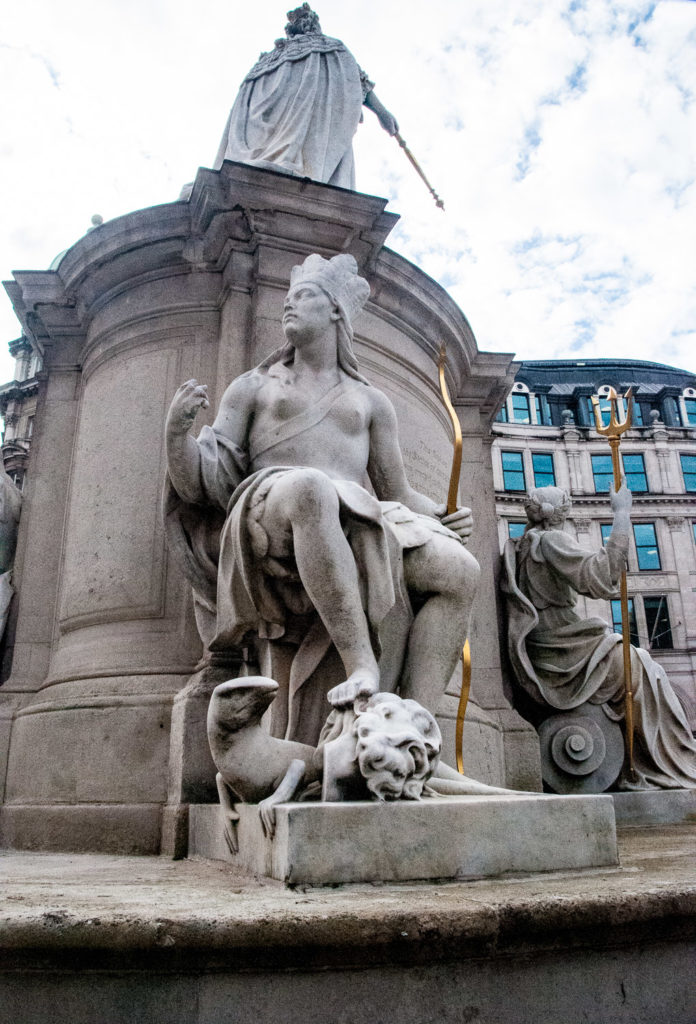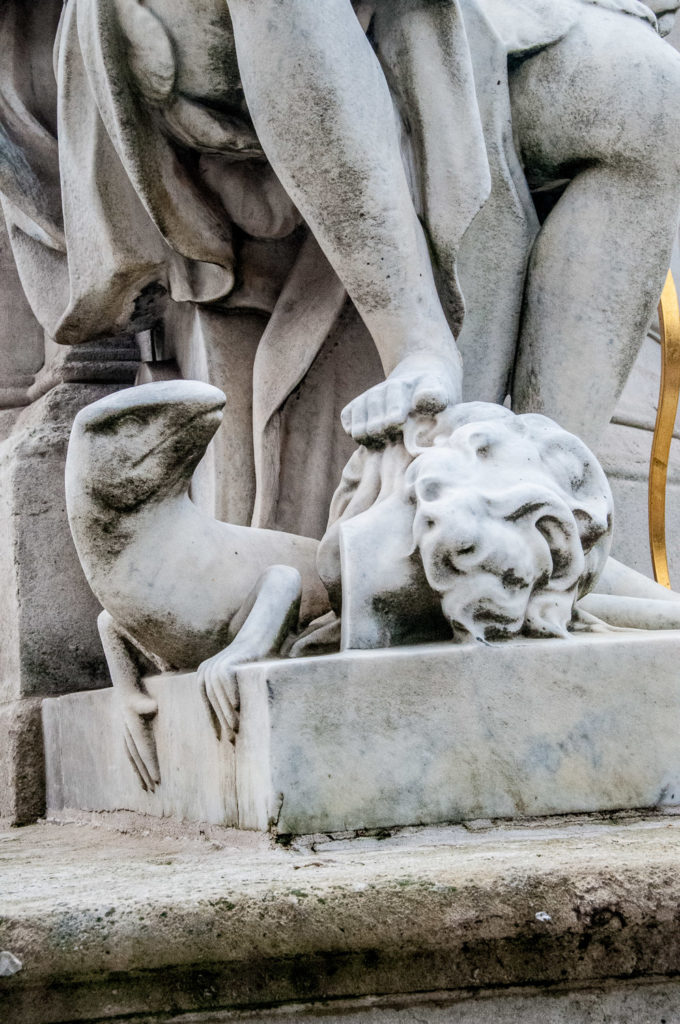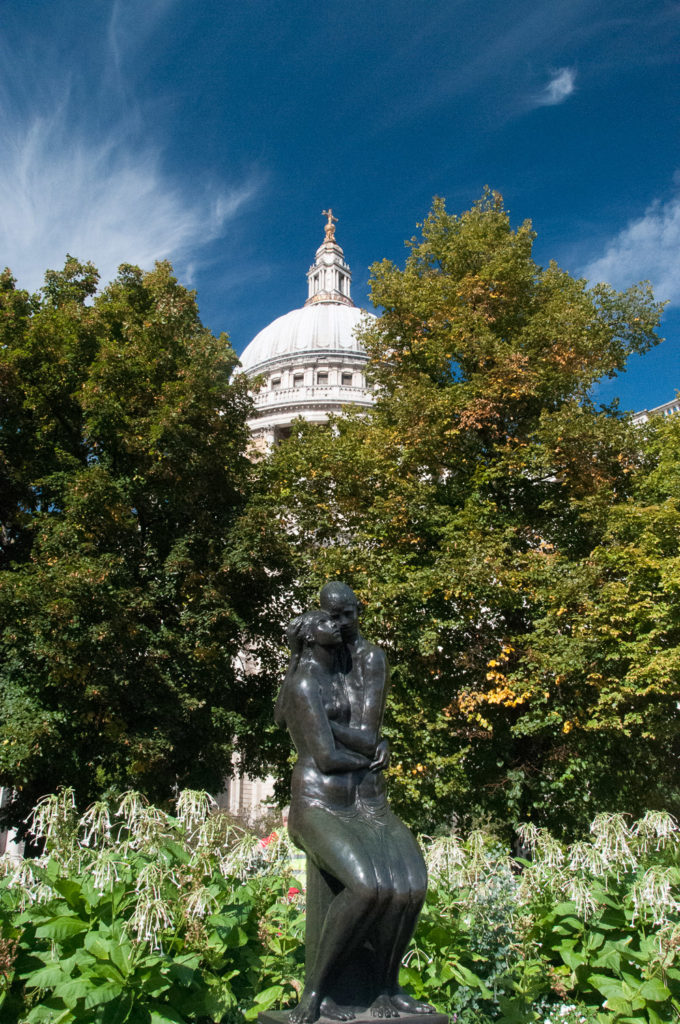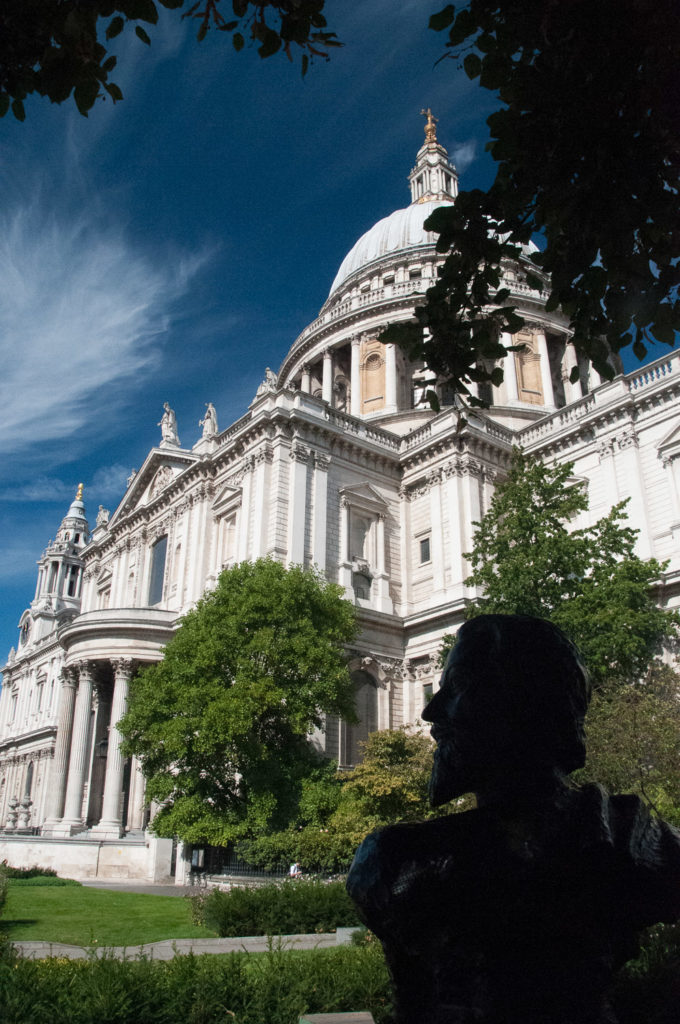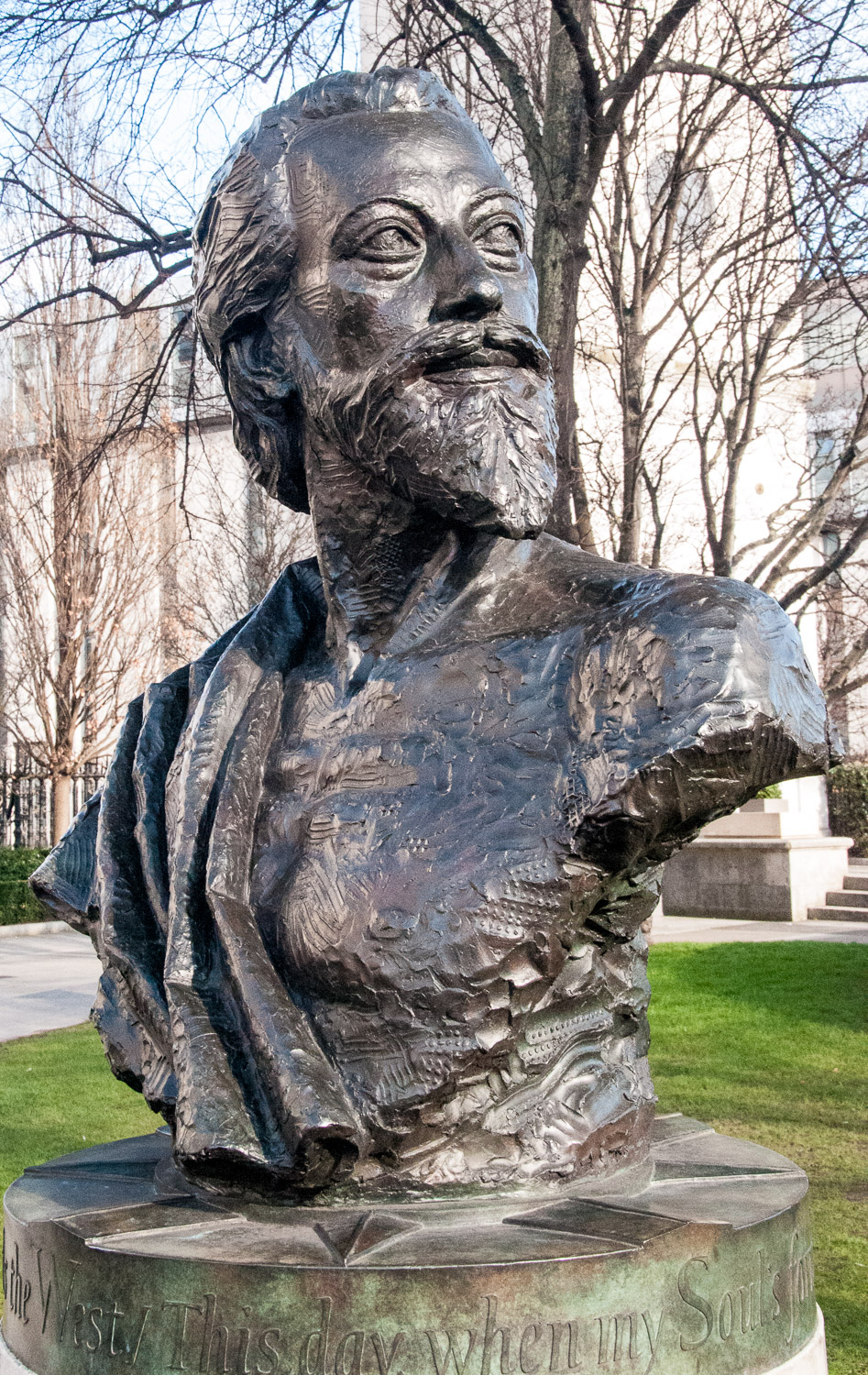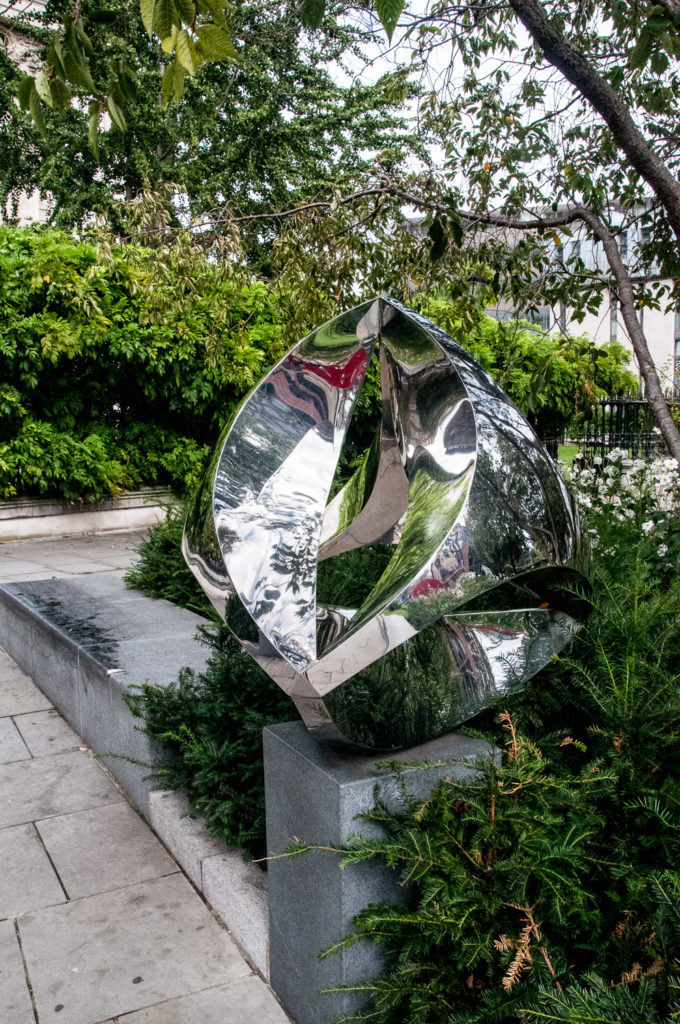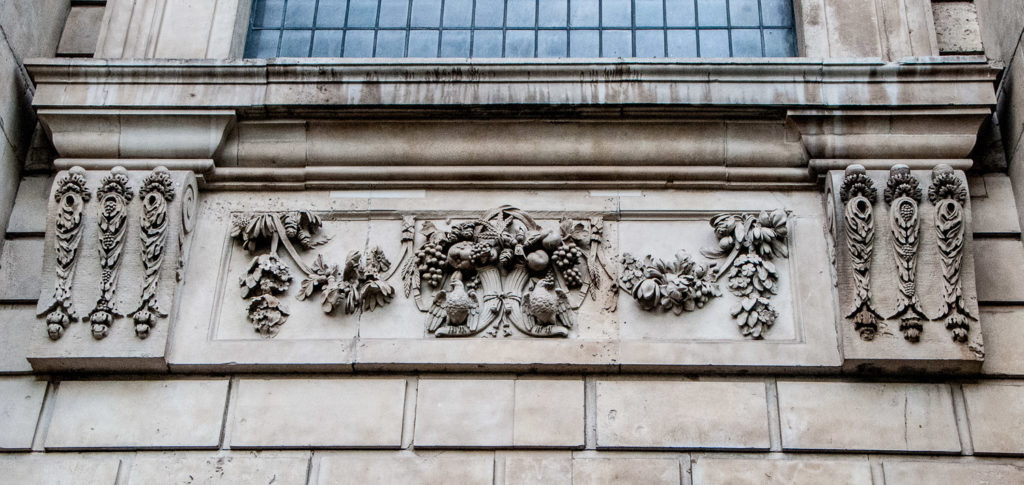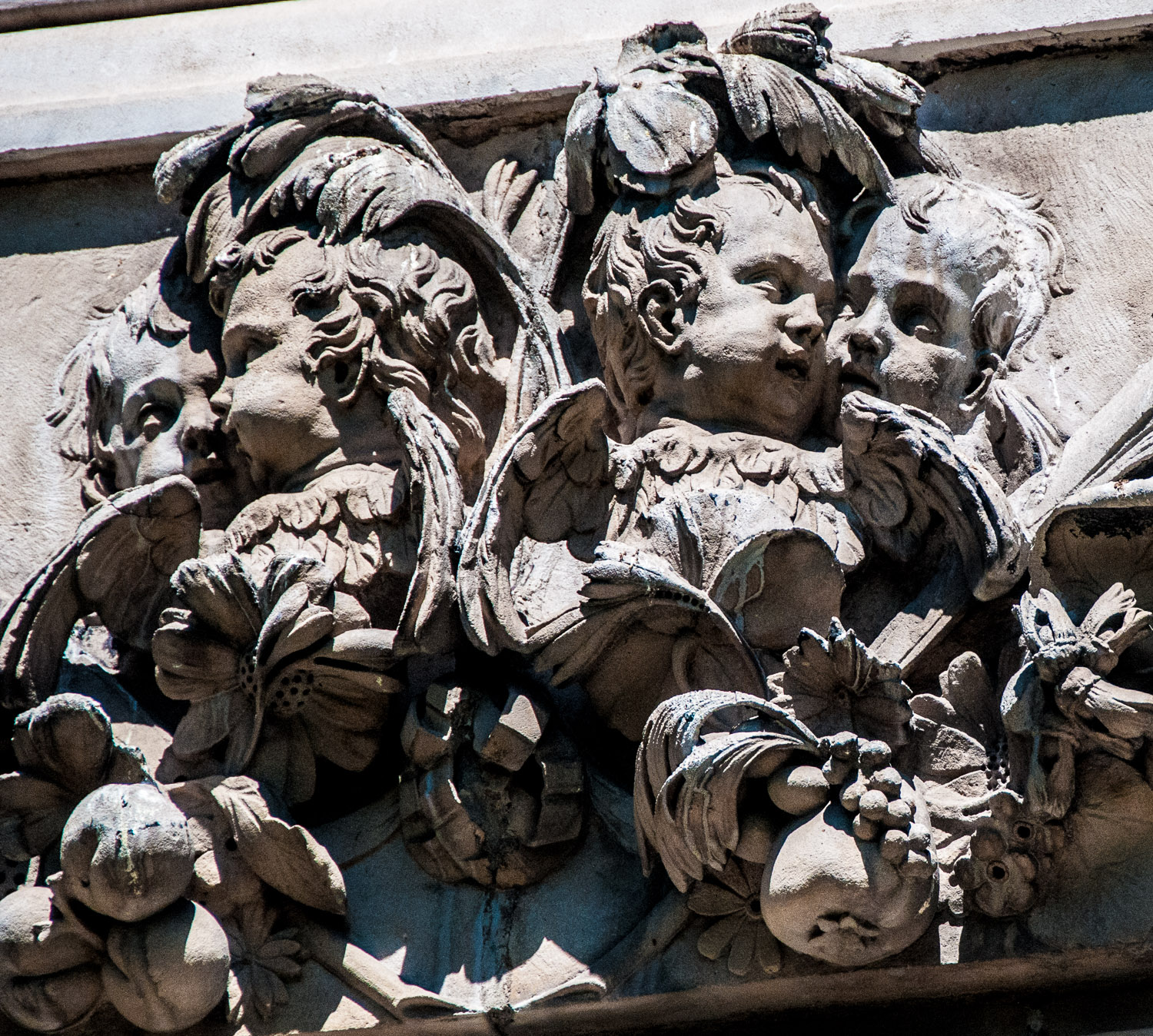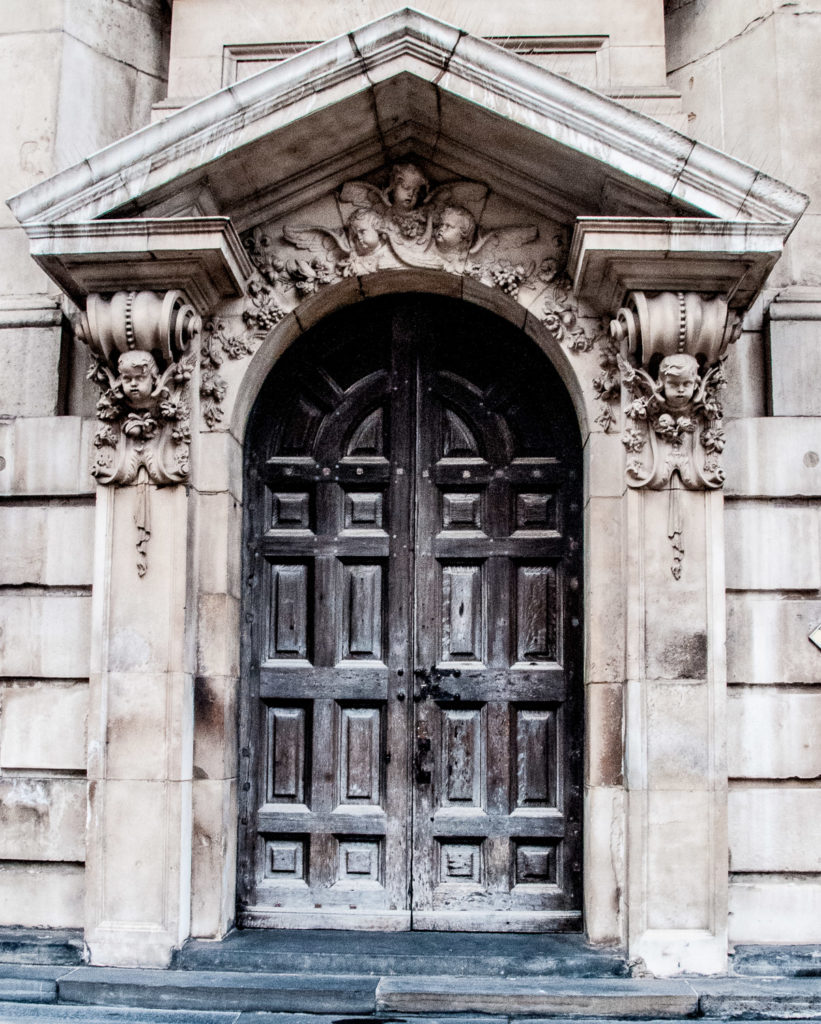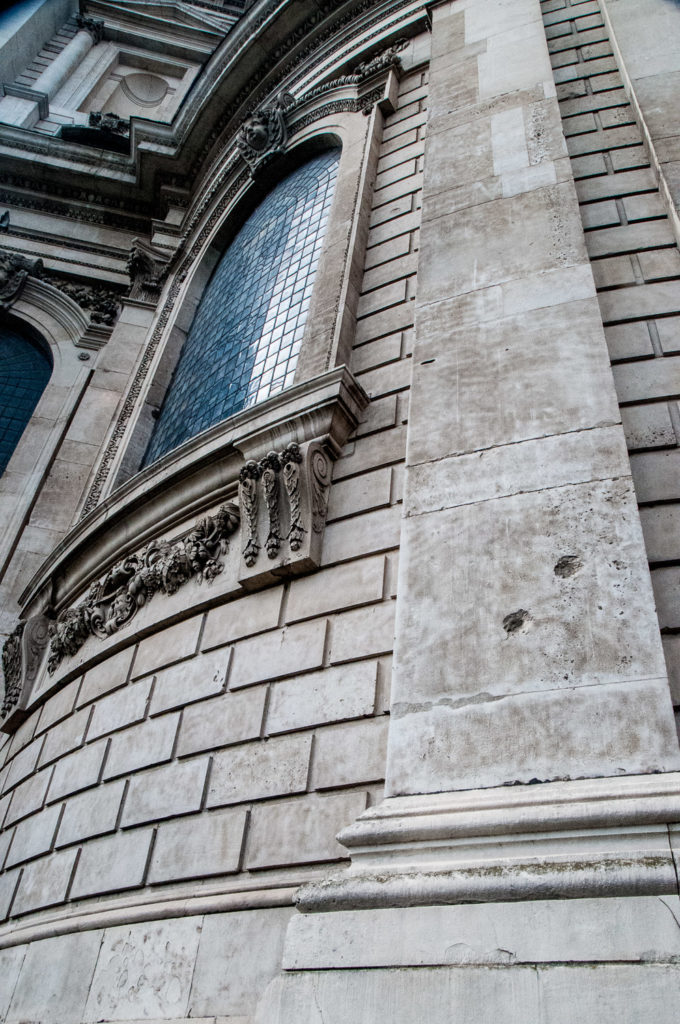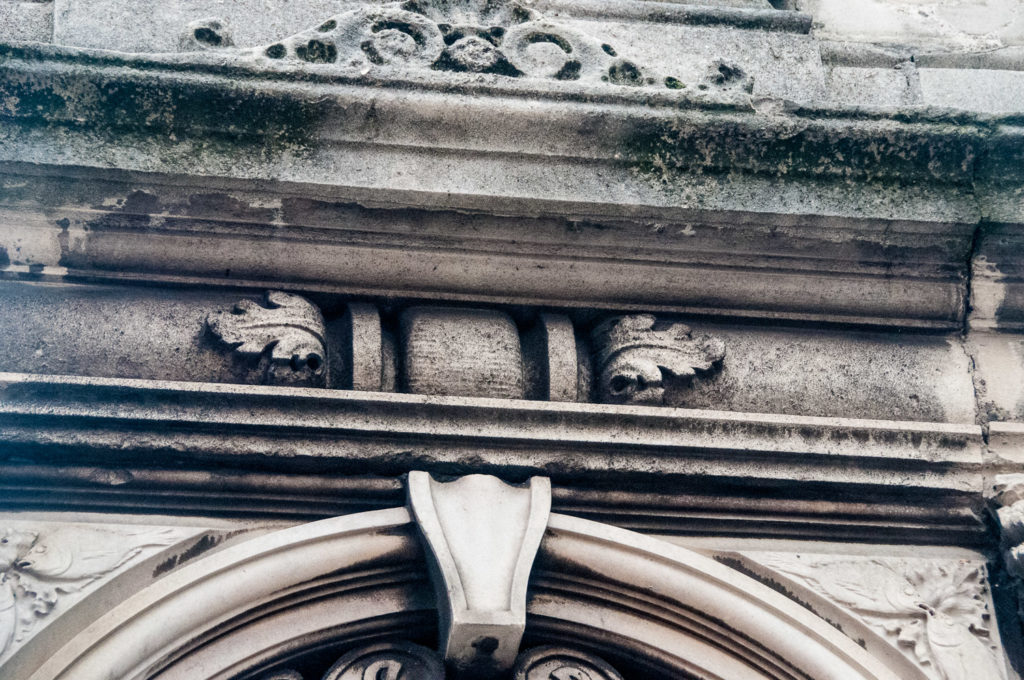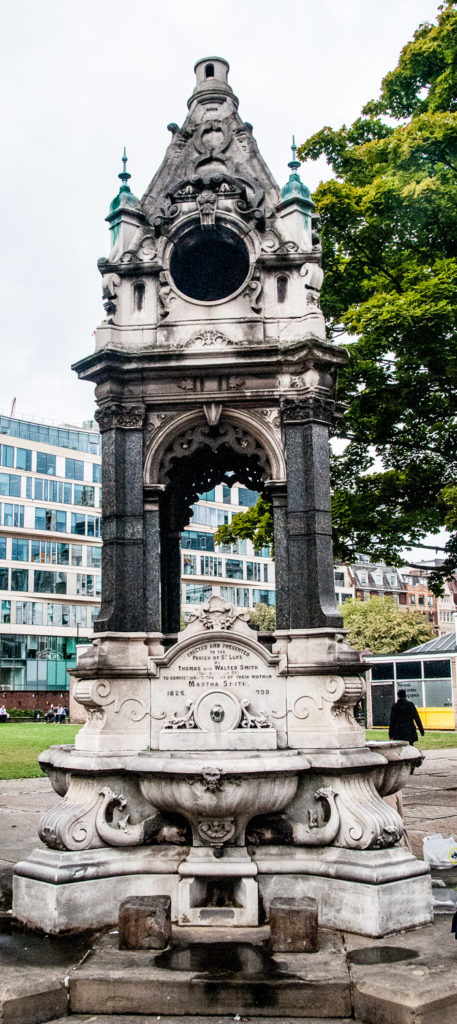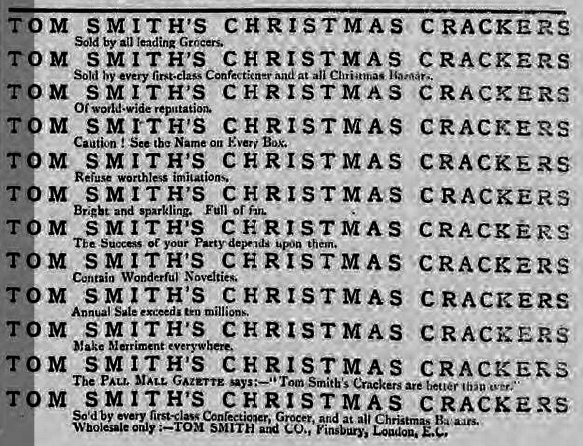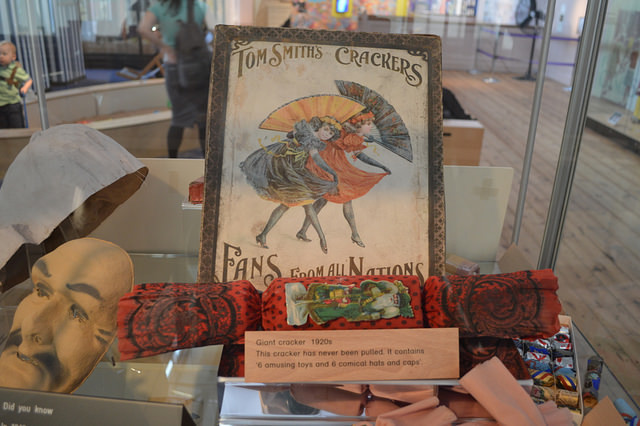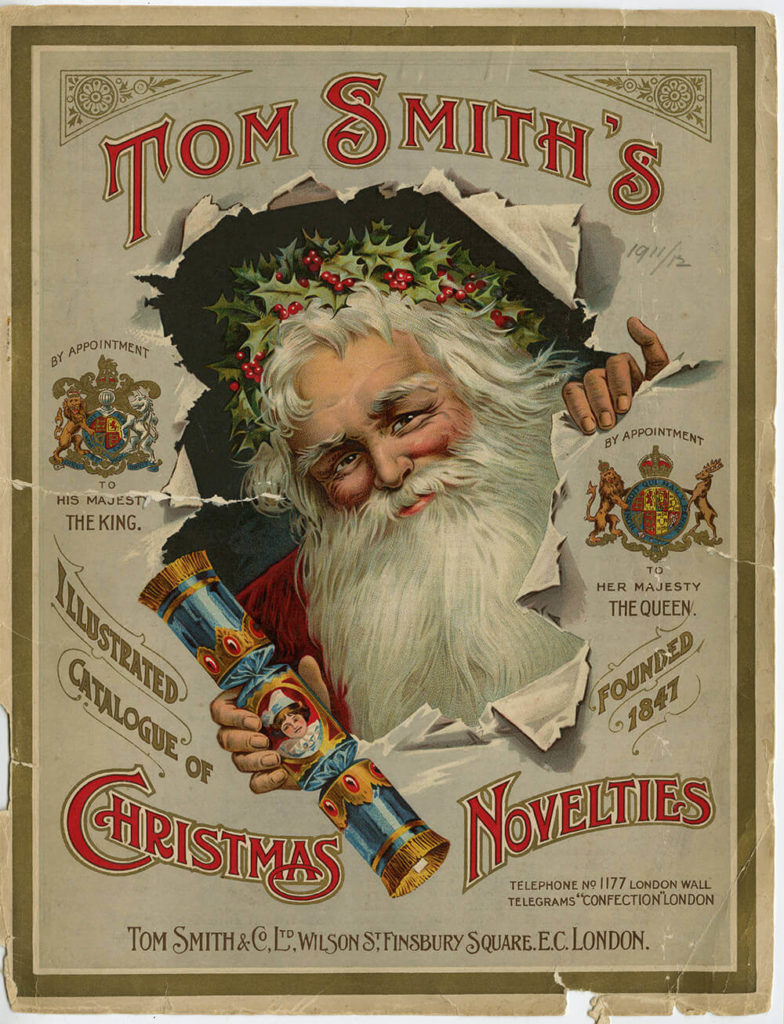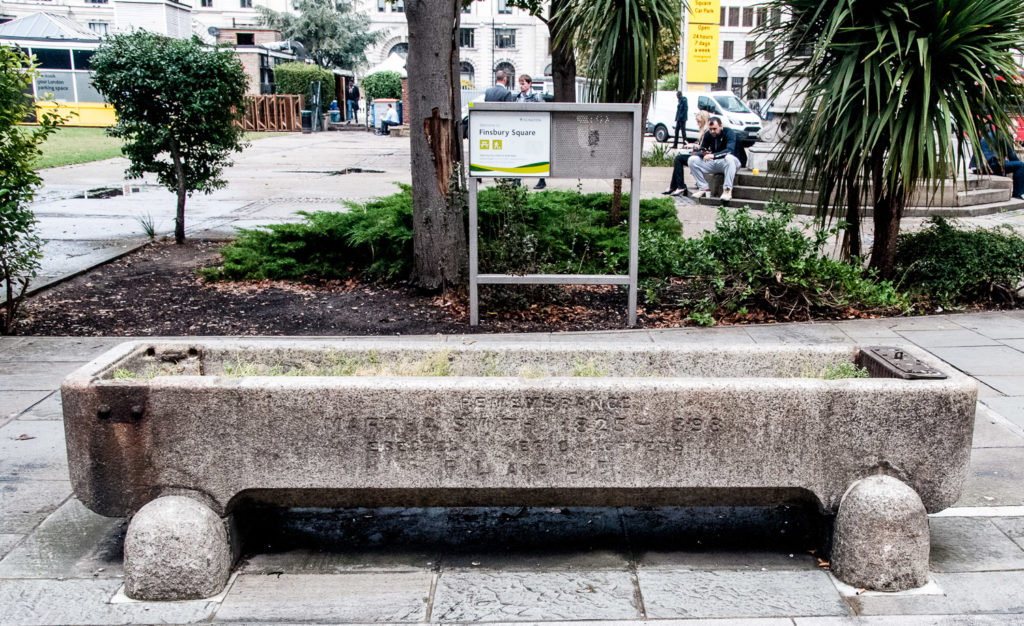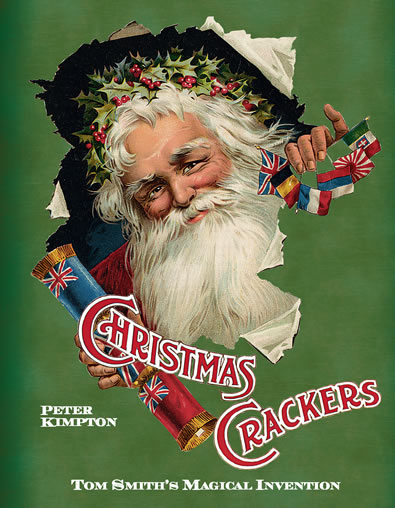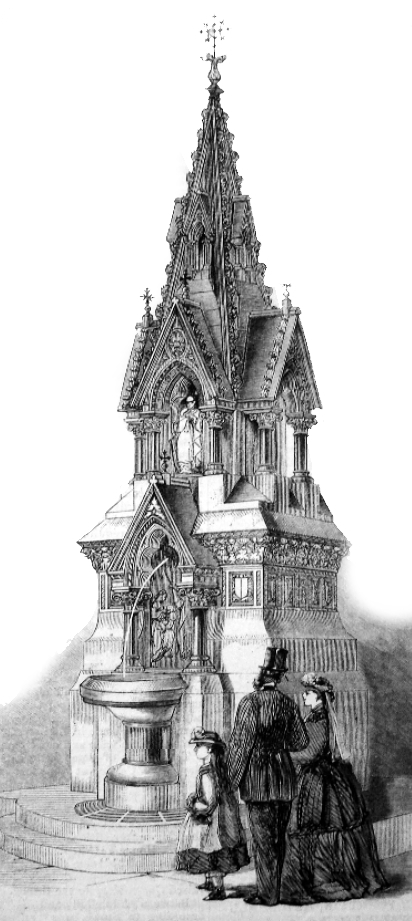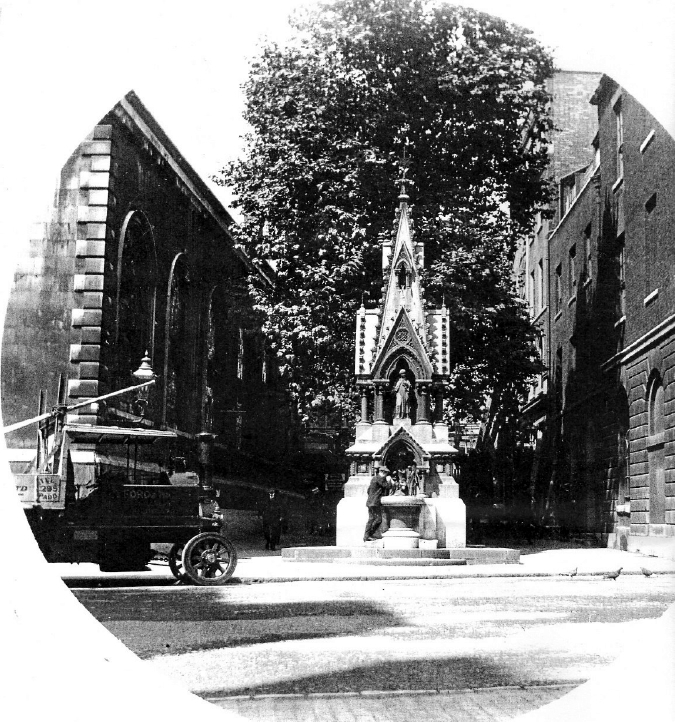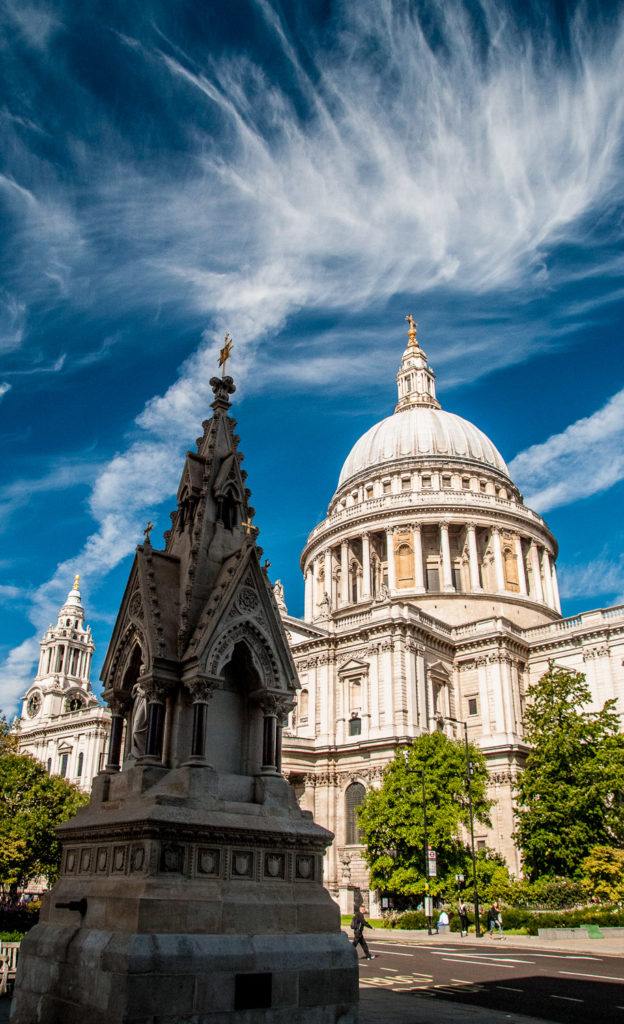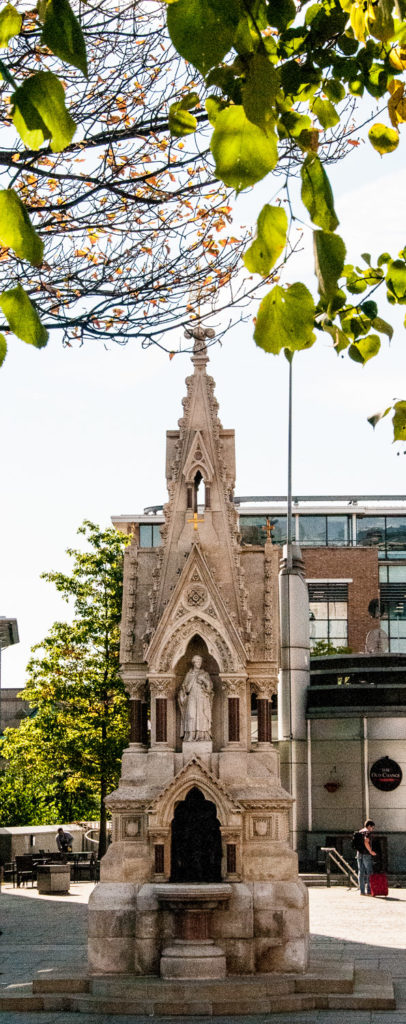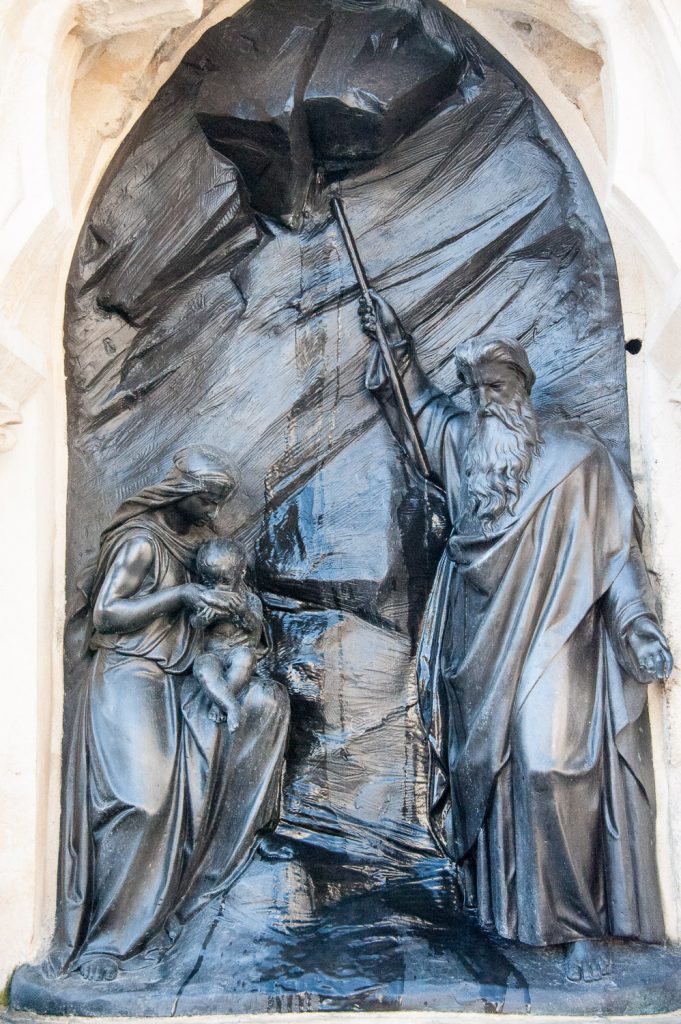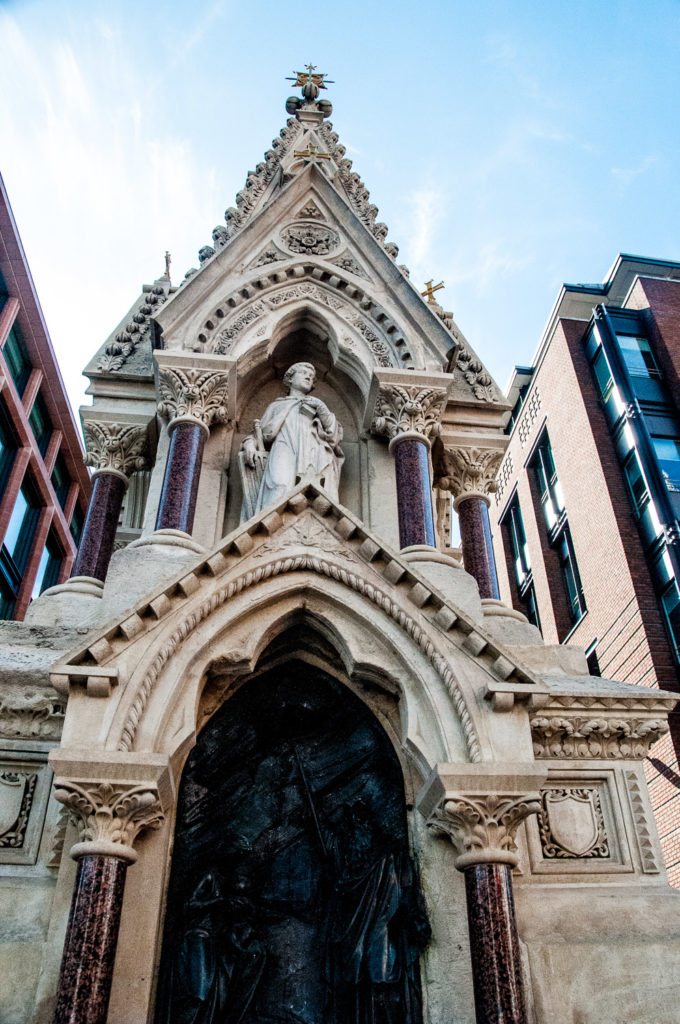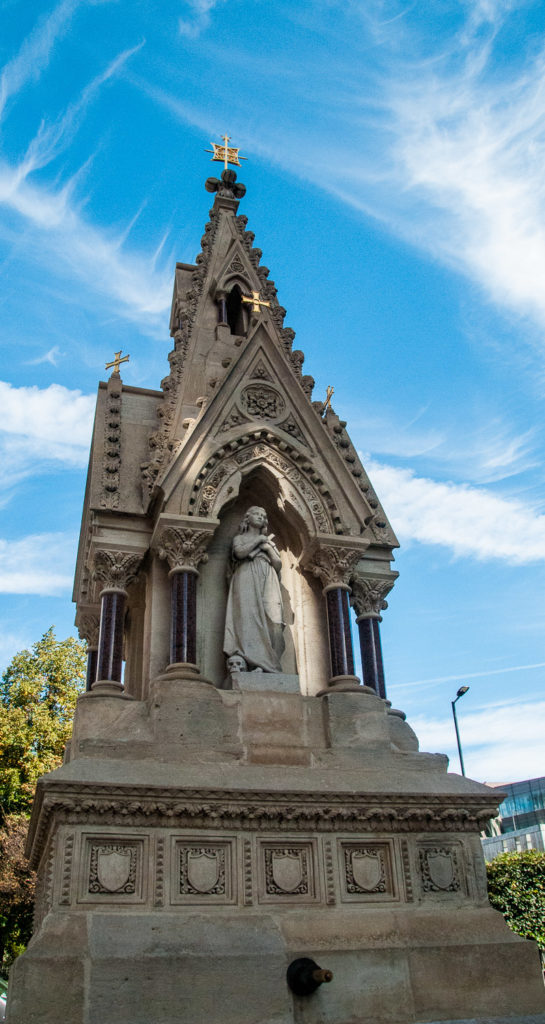Along with red telephone boxes, the red postbox is immediately recognisable as something intrinsically British and last week, as I passed the Penny Post’s founder’s statue, I decided to write a blog about them.
Here he is, cast in bronze and larger than life, looking across King Edward Street (EC1A 1HQ) …
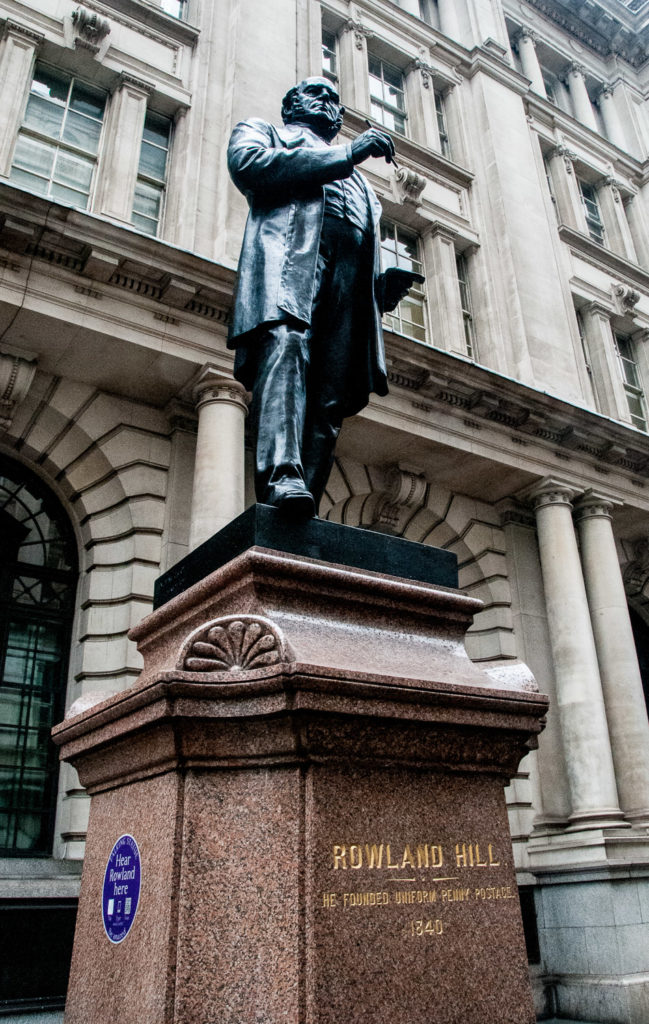
The unveiling took place on 17 June 1882 and the reporter for the City Press said all were impressed by the ‘grace and firmness’ of the statue’s attitude.
Sir Rowland Hill stands erect, in the attitude of an energetic and busy man, and, notebook and pencil in hand, may be taken to be engaged in some detail of his scheme.
It was originally sited outside the Royal Exchange and was moved, after some time in storage, to its present location in 1923. The area was then still dominated by the Post Office but gradually work was moved to Mount Pleasant and the main building sold to bankers Merrill Lynch in 1997.
The post box nearby to the north only dates from 2001 …
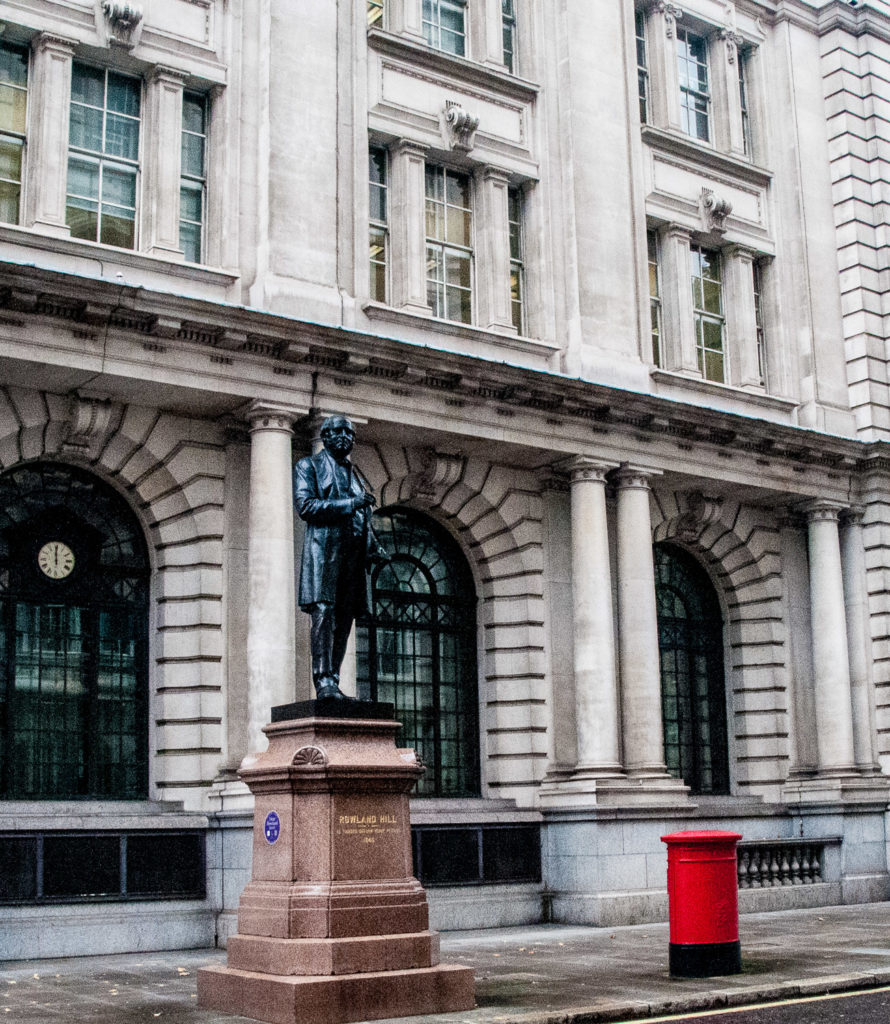
Now stroll through Postman’s Park (EC1A 7BT) to St Martin’s Le Grand, maybe pausing on the way to investigate the Watts Memorial to Heroic Self Sacrifice. Turn right after you leave the park and few yards ahead you will find this fascinating replica …
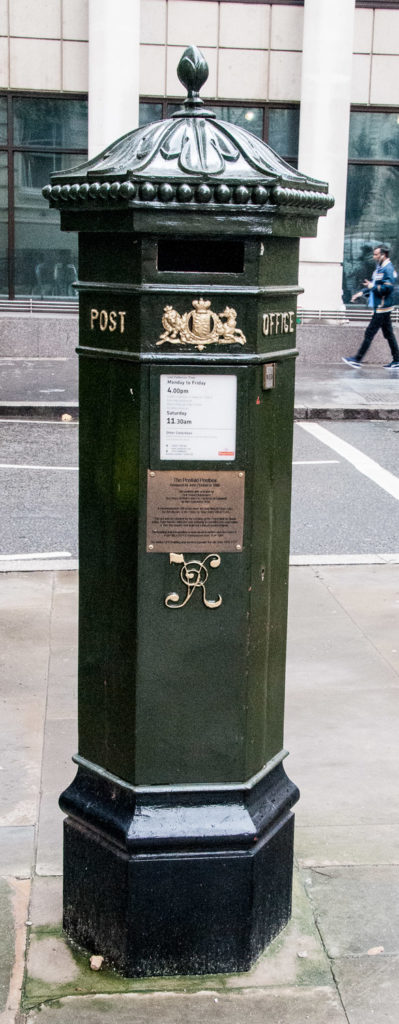
This early box was designed by the architect John Penfold in 1866. Green was chosen as the colour so the box would blend in with the landscape but it was replaced by ‘pillar box’ red in 1884 to improve visibility. Penfold had a fascinating career which included the re-design the Jewin Street area in the City of London after it had been destroyed by a large fire. It was again destroyed in the Blitz and now houses the Golden Lane Estate.
Devotees of trivia may be interested to note that in the cartoon series Danger Mouse DM’s sidekick is named Penfold since the duo’s secret hideout was a post box (although not a Penfold one).
And now a story that might be an urban myth.
John Betjeman lived in this house in Cloth Fair for almost 20 years (EC1A 7JQ). The story goes that, if he had written a letter but couldn’t be bothered to go to the post box, he would put a stamp on it and cast it out the window in the certain knowledge that a helpful Londoner would find it and post it for him.
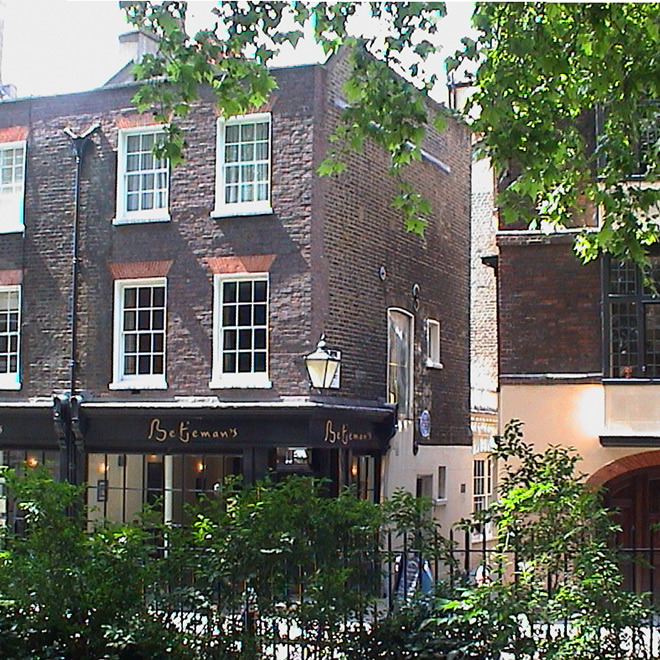
Sir John’s nearest post box would have been just on the other side of the Henry VIII gateway to St Bartholomew’s Hospital (EC1A 7BE) …

It’s unique in carrying no royal cipher and also because, although it faces the hospital, it is emptied from the other side of the wall in the street …
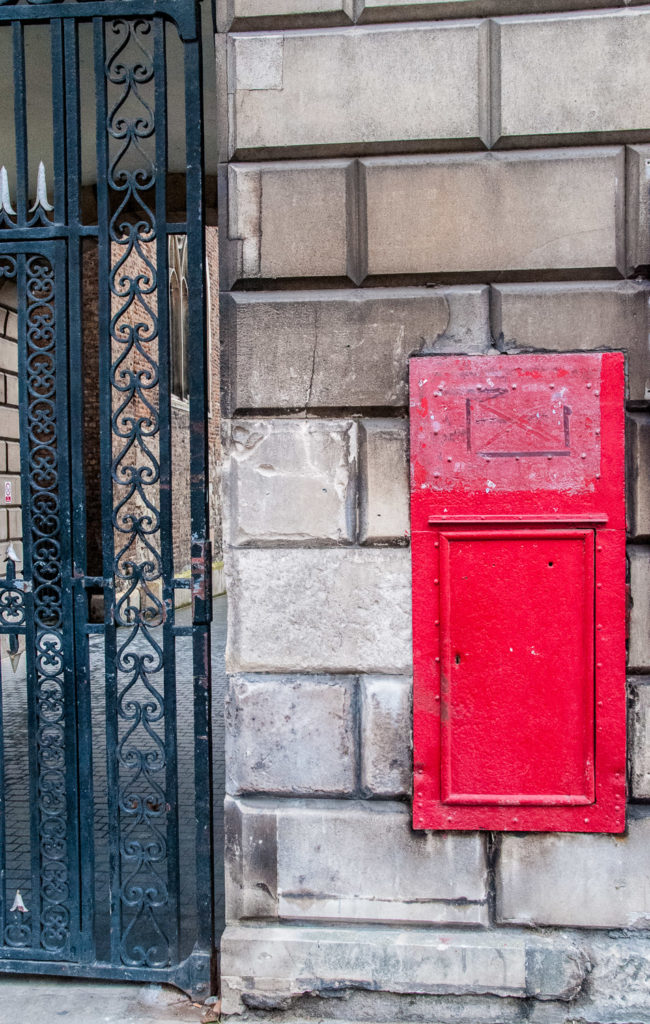
Hill’s 1840 Postal Reform act introduced affordable postage and easy-to-use adhesive stamps. Yet the nearest letter-receiving office was miles away from many communities. It took Anthony Trollope (the Victorian author, then a General Post Office official) to notice that in Europe, locked cast-iron pillar boxes were placed in convenient locations with regular collection times.
Trollope first introduced this efficient scheme to the Channel Islands in 1852, and pillar boxes emerged on the mainland the following year. By 1860, over 2,000 ‘standard’ design roadside boxes were established and by the 1890s, this had increased to 33,500. The UK now has about 115,500 and a Royal Mail post box stands within half a mile of over 98% of the UK population.
This box on Fleet Street has a plaque commemorating Trollope’s work …
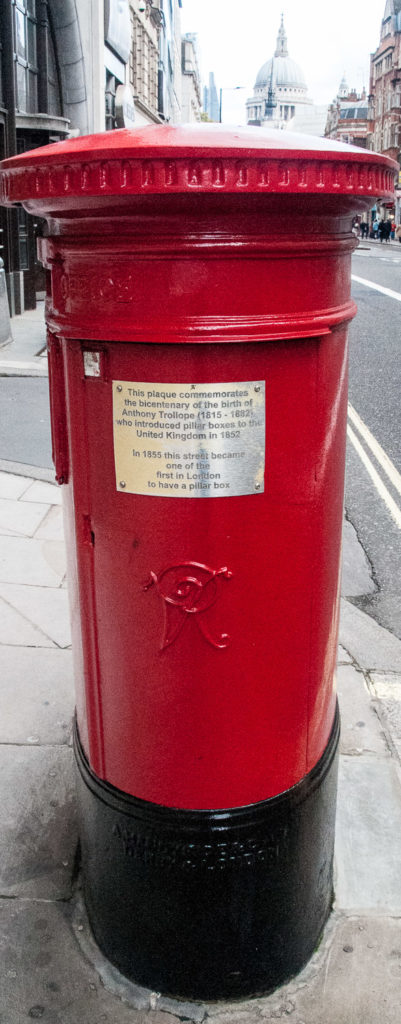
As well as free-standing pillar boxes there are also those fitted into walls. Here’s an advertisement by James Ludlow, a firm that produced them …
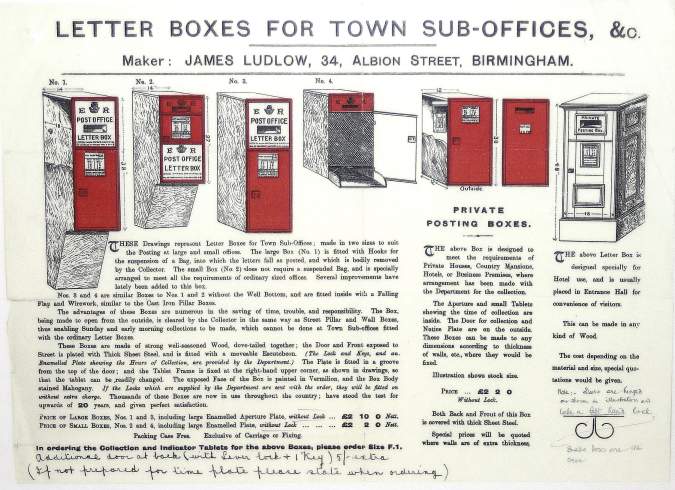
Here are a few from the City (although not produced by Ludlow) …
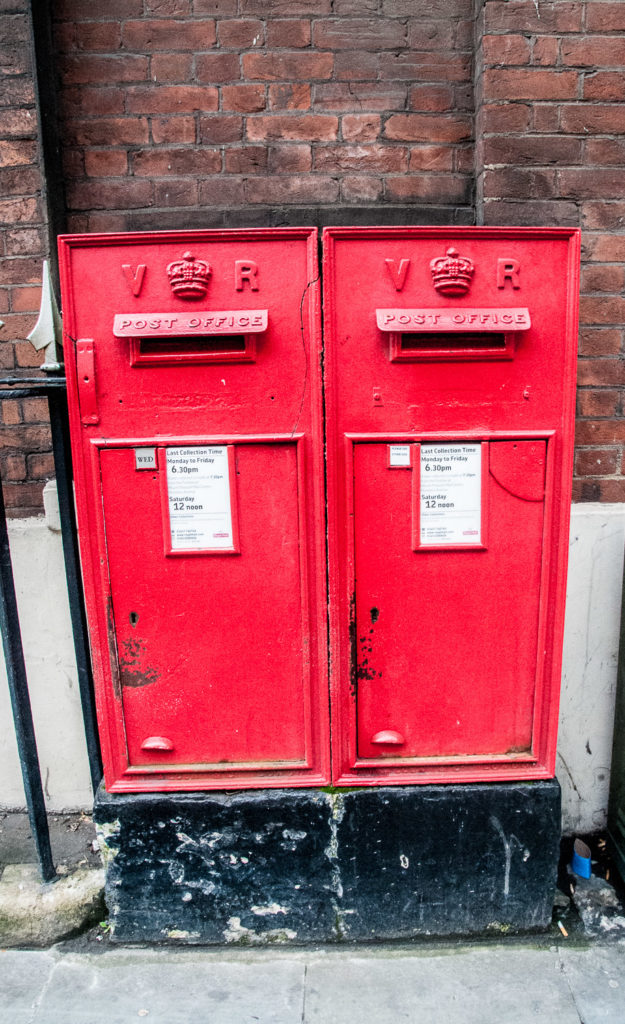
And two from the Barbican highwalk …
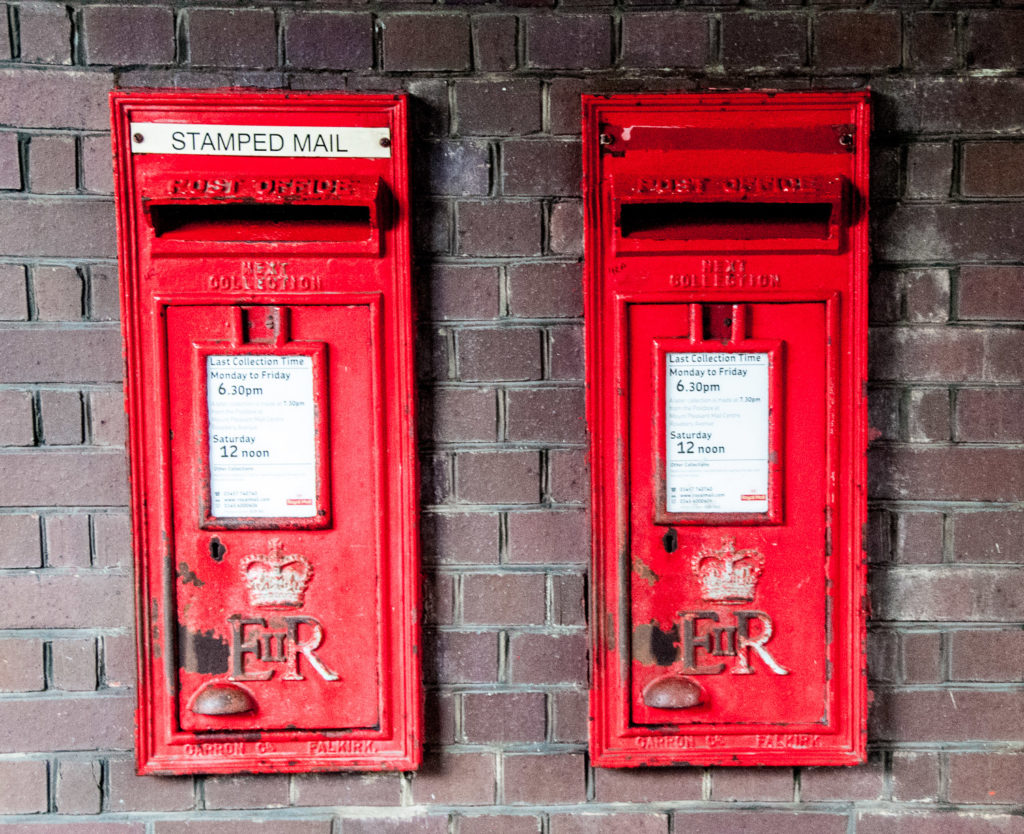
These were made by the Carron Company, one of the major suppliers of letter boxes during the twentieth century. From the Mungal Foundry, near Falkirk, Stirlingshire they cast pillar boxes (from 1922), wall boxes (from 1952) and small lamp boxes for rural areas (from 1969 to 1982). The ironworks were first established in 1759 and played an important part in the Industrial Revolution as well as becoming famous for its naval cannons but the company became insolvent in 1982 after 223 years casting iron.
I am beginning to get the hang of the terminology now – this, for example, is a ‘double aperture’ box since it has two slots …
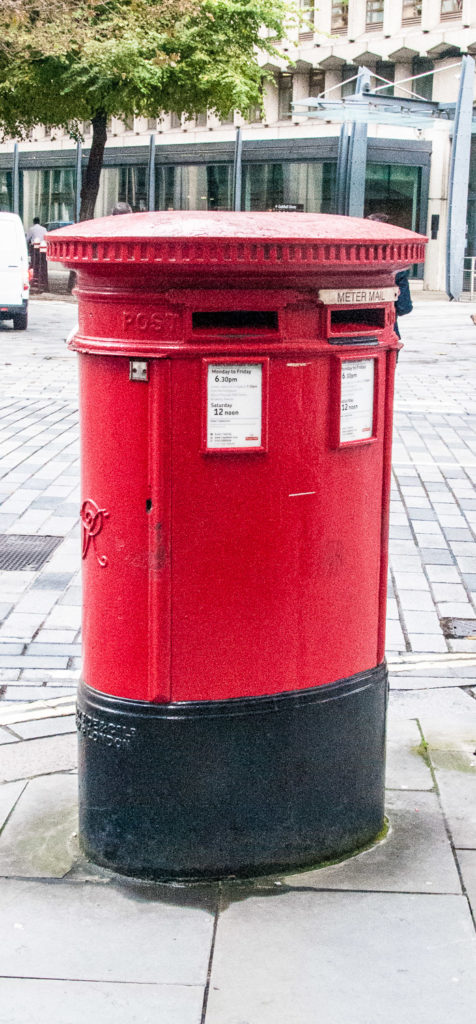
Some, like this one, still have a slot marked ‘Meter Mail’. Metered reply mail, or MRM, is a type of mail in which a business sends pre-printed, self-addressed envelopes or packages to customers with postage pre-paid in-house using a postage meter. This is much less common nowadays and many of the ‘meter mail’ signs are being removed.
Modern boxes are now being introduced with small businesses and eBay sellers in mind – here is one next to a Victorian box near Barbican station …
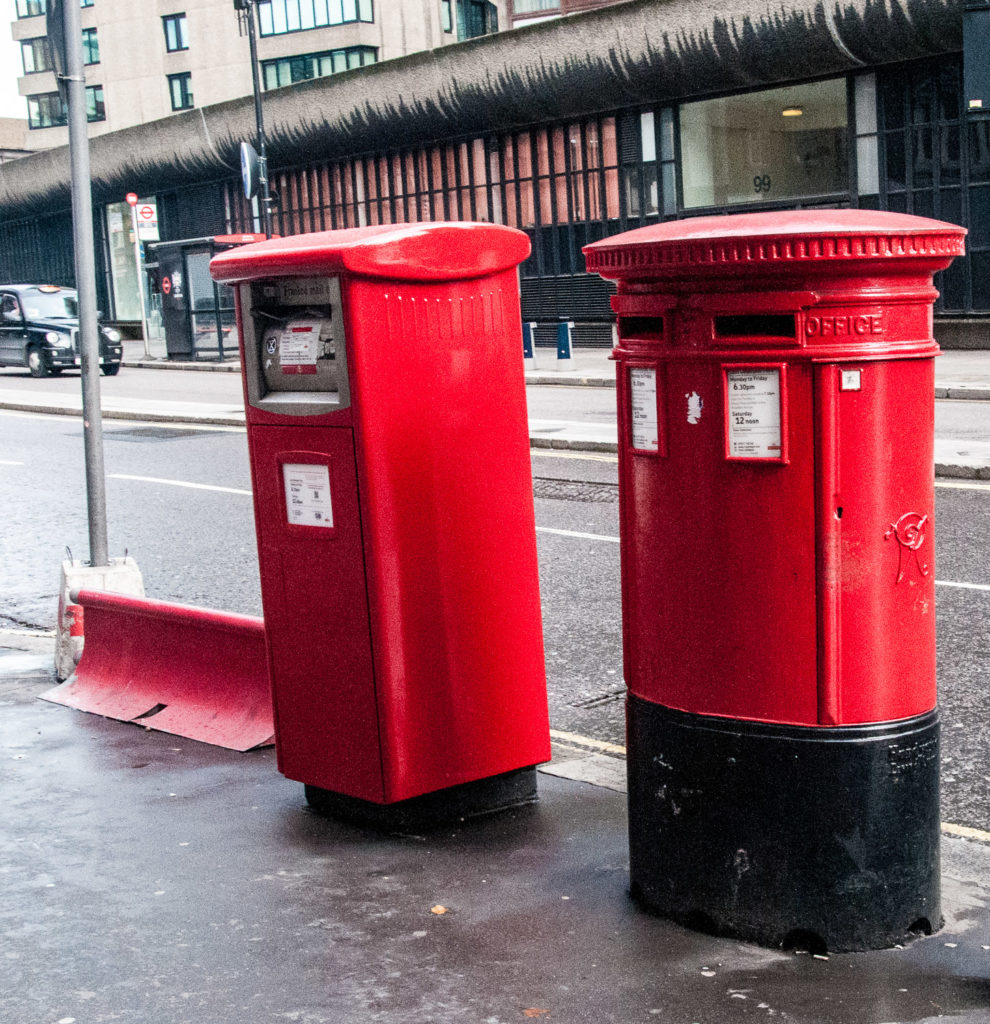
I know why the change is needed but I still know which one I prefer.
For all things postal I strongly recommend a visit to the Postal Museum where you can, among many other exhibits, admire this special Air Mail box, created to make communication with His Majesty’s Dominions around the world easier …
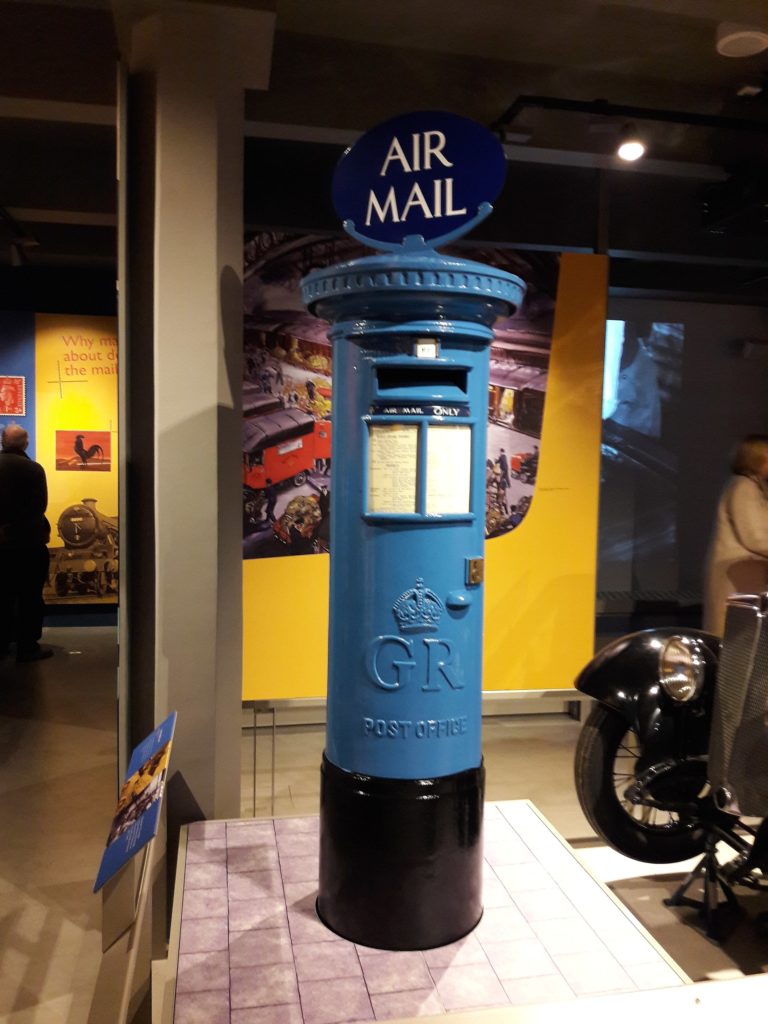
You can read lots more on these fascinating websites, one jointly published by Historic England and Royal Mail and this one by The Letter Box Study Group.
Don’t forget you can follow me on Instagram here: https://www.instagram.com/london_city_gent/
